microplastics / micro fibres
description: tiny particles of plastic or fibres that pollute water and soil
56 results

No. More. Plastic.: What You Can Do to Make a Difference – the #2minutesolution
by
Martin Dorey
Published 2 May 2018
A study by a group of students at the University of California Santa Barbara’s Bren School of Environmental Science and Management found that, when washed in a washing machine, a fleece sheds, on average, 1.79 grams of micro fibres per wash. The #2minutesolution The good news is that you can do something about this. Stop wearing clothes from man-made fibres. Of course it’s not that easy, or cheap, but may lead you to buy better quality clothes that will last longer. You can also buy an in-line filter for your washing machine. Or a cheap alternative is to buy a Guppy Bag, a lint catching bag that can be used in all washing machines. It will catch a lot of the micro fibres that come off your clothes and costs around £27. If you can’t give up the gym kit, fleeces or technical clobber, there are a few simple ways to reduce their impact: Wash clothes less frequently.
…
And it won’t end up becoming thousands of toxic pieces of microplastic. Everything you do has an effect. Every piece of single-use plastic you refuse is a piece that won’t end up in the ocean. Every letter you write gets noticed. Every protest you make gets heard somewhere. All those actions add up. That’s why I know we can change the world, 2 minutes at a time. What you can do now Next time you go out, pick up the first plastic bottle you see and take it home to recycle. How long did it take? And yet that’s 1,000 pieces of microplastic not floating around in the ocean in years to come. WE ARE DEVELOPING alternatives to plastic all the time.
…
Bottled water comes in plastic, usually made from virgin plastic (non-recycled), which is made from oil and has to be transported (with a high carbon footprint). It sits on a shelf until you buy it, where it may leach chemicals – such as BPA and dioxins as well as microplastics – into the water. And while it has to pass safety standards, it is only tested when it is bottled. Recent studies also showed that 93% of bottled water showed signs of microplastic contamination. The #2minutesolution So here it is: use the tap. In the UK, tap water is some of the best on the planet. When tested and measured for compliance to standards set by the EU, British tap water was on average 99.9 per cent compliant.
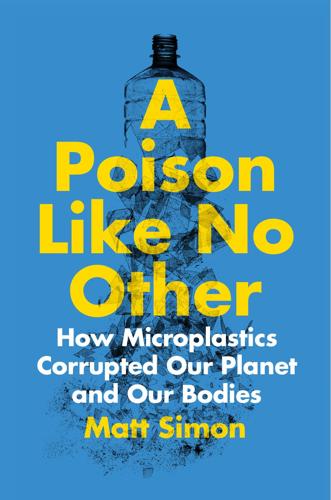
A Poison Like No Other: How Microplastics Corrupted Our Planet and Our Bodies
by
Matt Simon
Published 24 Jun 2022
Fields, and Patricia A. Matra. 2020. “Accumulation and Effects of Microplastic Fibers in American Lobster Larvae (Homarus americanus).” Marine Pollution Bulletin 157:111280. https://doi.org/10 .1016/j.marpolbul.2020.111280. 103. Jensen, Lene H., Cherie A. Motti, Anders L. Garm, Hemerson Tonin, and Frederieke J. Kroon. 2019. “Sources, Distribution and Fate of Microfibres on the Great Barrier Reef, Australia.” Scientific Reports 9:9021. https://doi.org/10.1038/s41598-019-45340-7. 104. Utami, Dwi Amanda, Lars Reuning, Olga Konechnaya, and Jan Schwarzbauer. 2021. “Microplastics as a Sedimentary Component in Reef Systems: A Case Study from the Java Sea.”
…
Ásbjörnsson, and Erik Sturkell. 2021. “Microplastics in Glaciers: First Results from the Vatnajökull Ice Cap.” Sustainability 13 (8): 4183. https://doi.org/10.3390/su13084183; Abbasi, Sajjad, and Andrew Turner. 2021. “Dry and Wet Deposition of notes 6. 7. 8. 9. 10. 11. 12. Microplastics in a Semi-Arid Region (Shiraz, Iran).” Science of the Total Environment 786:147358. https://doi.org/10.1016/j.scitotenv.2021 .147358. Simon, Matt. 2019. “A Shocking Find Shows Just How Far Wind Can Carry Microplastics.” Wired. https://www.wired.com/story/wind-micro plastics/; Allen, Steve, Deonie Allen, Vernon R.
…
ACS Earth and Space Chemistry 3 (9): 1729–39. https://doi.org/10.1021/ac searthspacechem.9b00132; Zhang, Yulan, Shichang Kang, Steve Allen, Deonie Allen, Tanguang Gao, Mika Sillanpää. 2020. “Atmospheric Microplastics: A Review on Current Status and Perspectives.” Earth-Science Reviews 203:103118. https://doi.org/10.1016/j.earscirev.2020.103118. Revell, Laura E., Peter Kuma, Eric C. Le Ru, Walter R. C. Somerville, and Sally Gaw. 2021. “Direct Radiative Effects of Airborne Microplastics.” Nature 598, 462–67. https://doi.org/10.1038/s41586-02103864-x; Simon, Matt. 2021. “Microplastics May Be Cooling—and Heating—Earth’s Climate.” Wired. https://www.wired.com/story/micro plastics-may-be-cooling-and-heating-earths-climate/. Beaurepaire, Max, Rachid Dris, Johnny Gasperi, and Bruno Tassin. 2021.
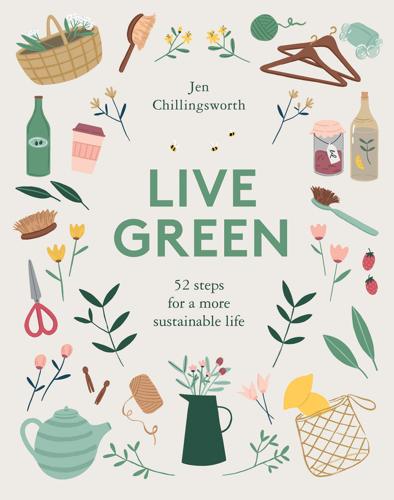
Live Green: 52 Steps for a More Sustainable Life
by
Jen Chillingsworth
Published 19 Feb 2019
These are unscented and filled with pellets made from minerals and plant-derived ingredients. They are vegan, hypoallergenic and great for sensitive skin. Eco eggs/balls can be used for hundreds of washes, making them very cost effective too. MICRO FIBRES When washing clothing made with microfibres (fleeces, acrylic sweaters, synthetic jackets, etc), tiny fibres are released from them into the waste water. These eventually end up in rivers, lakes and oceans where they can harm the aquatic life. Investing in a microfibre-catching laundry ball or a special mesh bag can capture these tiny fibres and prevent them escaping into the water supply. DRY CLEANING Most dry cleaning involves using a harmful solvent known as perchloroethylene to clean clothing.
…
Choose reusable shopping bags Many of us have already switched from single-use plastic shopping bags to ‘bags for life’ – a tougher plastic bag that the supermarkets sell and will replace for another one if it rips or tears. It seems like a good idea in theory, but in practice many of them are still thrown away and end up in landfill. These plastic bags are made from non-renewables and they don’t biodegrade. They use photo degradation to break down into tiny microplastics, which cause major harm to the environment, birds and wildlife. It’s an easy switch to choose a shopping bag that’s made from a more sustainable material. The hardest thing about switching to a reusable bag is remembering to take them with you when you go shopping! Write a note reminding you to take your bags and stick it somewhere you will see before you leave the house.
…
Try some of these combinations: » Raspberry, lime & mint: ten raspberries, two fresh mint leaves, one sliced lime. » Pineapple & thyme: half a small pineapple chopped into chunks and two sprigs of fresh thyme. » Strawberry, orange & basil: ten strawberries, one sliced orange and two fresh basil leaves. » Blueberry & peach: ten blueberries, two chopped peaches. Tea We love the convenience of using teabags as it makes the process of tea-making effortless. However, many teabags are made with small amounts of plastic so as they biodegrade, they leave tiny microplastics behind. Thankfully, many of the bigger tea producers have realized that customers don’t want plastics in their cuppa and are looking at sourcing alternative manufacturing materials. Until they are fully plastic free and completely biodegradable, it’s worth making the simple change to loose-leaf tea.

Thrifty Ways for Modern Days
by
Martin Lewis
Published 4 May 2010
, computers, radiators and anything with those ‘hard to reach’ fiddly bits but not for use after cleaning your baby! To dust the lounge try a damp micro-fibre cloth (you can pick these up cheaply at Lidl etc.). This saves money on polish and it actually picks up the dust instead of spreading it round the room. It works a treat for most surfaces in the home like mirrors, computer keyboards, furniture and walls. To get behind radiators use a long-handled micro-fibre fluffy duster (from the local pound shop) or hold a damp tea towel by the corner and dangle it behind the radiator, swing it around and the dust should stick to it or you can use a damp sock stuck on a wire coat hanger.
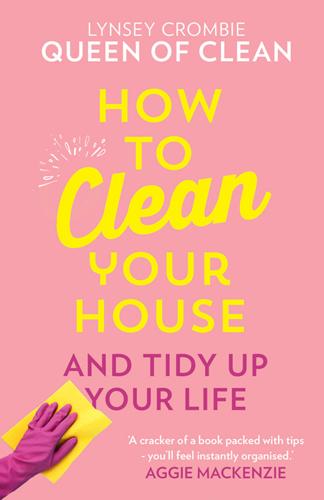
How to Clean Your House
by
Lynsey, Queen of Clean
Published 15 Nov 2019
Cover with a damp towel or kitchen paper and leave for 30 minutes, then wipe with a clean damp cloth. Microfibre cloths I use a lot of microfibre cloths; I love how easy they are to clean with. Microfibre is a blend of polyester and polyamide (nylon) and each fibre is up to 50 times finer than a human hair. Ideal for high powered cleaning, the fine hairs in a microfibre cloth pick up and trap more dirt than standard cloths. General purpose microfibre cloths also have a small electrostatic charge, which makes them very effective for picking up dust. Microfibre cloths can be used for almost any cleaning job and work particularly well if you clean with the ‘S’ action.
…
Making an ‘S’ shape with the cloth means that you more effectively cover the entirety of the surfaces you are cleaning. Dusting Used both damp and dry, microfibre cloths make ideal dusters. Electronics and glassware Microfibre cloths are particularly good for cleaning electronics and glassware, including television and computer screens and tablets. As microfibre cloths don’t pick up debris, they will not leave scratch marks. Stainless steel With just water and vinegar and using the ‘S’ action, microfibre cloths are great for giving stainless steel a shiny finish. Chrome When cleaning your chrome taps, use a microfibre cloth dipped in a solution of vinegar and water. This will remove any water marks, ground-in grime, and soap scum, leaving your taps beautifully shiny.
…
Eyewear To clean glasses, rub them really well with a little rubbing alcohol on your microfibre cloth. Grout and tiles Grout can be very hard to keep clean and bright white. After scrubbing grout with a small hard brush or a toothbrush, use a microfibre cloth to wipe away any soapy suds and buff the grout and tiles clean and dry, leaving them super shiny. Washing up Another great tip is to use your microfibre cloths for the washing up. Microfibre cloths don’t cling onto bacteria, so they don’t end up smelling. When you’re finished, make sure to wring out as much water as possible and hang up to dry. Drying dishes Microfibre cloths soak up water really well so are also great for drying the dishes.
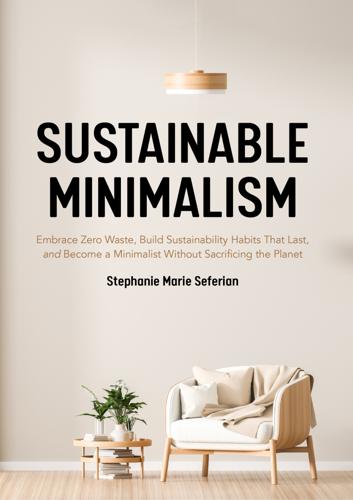
Sustainable Minimalism: Embrace Zero Waste, Build Sustainability Habits That Last, and Become a Minimalist Without Sacrificing the Planet (Green Housecleaning, Zero Waste Living)
by
Stephanie Marie Seferian
Published 19 Jan 2021
Plastic waste also encourages the growth of pathogens in the ocean, as corals that come into contact with plastic have an 89 percent chance of contracting disease.86 It can often feel as though plastic has infiltrated every inch of the planet and, thanks to microplastics research, data prove that it has. Plastic does not simply disappear over time. Instead, it reduces in size into smaller and smaller pieces as it breaks down. A microplastic is a plastic particle less than five millimeters long, and researchers have found microplastics everywhere they look—in our deepest oceans, atop our highest mountains, in the bellies of animals, in rainwater, and in tap water around the world. An Australian study found that humans around the world consume a credit card’s worth of plastic each week.87 And while the sheer prevalence of microplastics is concerning, their lasting effects on our ecosystems are not yet known.
…
Synthetic fibers are made by humans through chemical synthesis, and although synthetic fibers account for more than 60 percent of textile fibers used in the world, they contribute significantly to microplastic pollution when washed in our washing machines. Nylon, polyester, spandex, Lycra, and acrylic are examples of synthetic fibers. Polyester is the world’s most popular synthetic fiber. Indeed, polyester is well-loved by consumers because it is wrinkle-free, dries quickly, and often inexpensive. But polyester is melted plastic that is squeezed through a spinneret to create long, continuous filaments. As you wash your polyester clothing, these filaments break down, enter waterways, and contribute to microplastic pollution. A single garment may shed up to 1,900 fibers every time it’s washed.53 And, as is the problem with all plastics, synthetic fibers are not biodegradable and persist in our ecosystems even as they break apart.
…
Free items tend to be junk, and allowing them into your home increases the amount of plastic waste you must eventually throw away. Avoid Microbeads and Glitter Although microbeads are commonly advertised as essential ingredients in exfoliating personal care products and toothpaste, they’re nothing more than tiny pieces of plastic with damaging effects on the environment. Similarly, glitter is a collection of shiny microplastics. Avoid personal care products that contain microbeads, and avoid makeup and art projects with glitter. Get Cooking Last year, Ani’s school hosted a bake sale fundraiser, and as I perused the table of cookies, cupcakes, and muffins, I noticed that nearly all the food was purchased and woefully over-packaged.
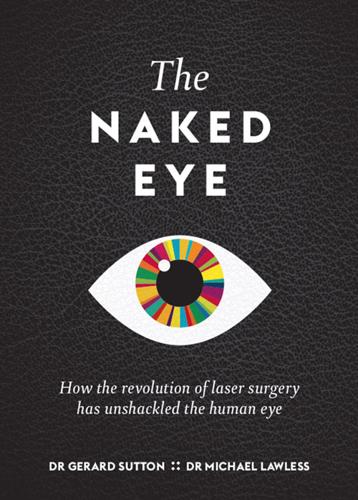
The Naked Eye: How the Revolution of Laser Surgery Has Unshackled the Human Eye
by
Gerard Sutton
and
Michael Lawless
Published 15 Nov 2013
It is often possible to completely eradicate the need for glasses but not always and this is something that needs to be discussed before having a procedure as each individual case is different. The laser burns your eye… Absolutely not! Let’s have another look at the structure of the cornea. Over 90% of it is made up of collagen, arranged into a thick layer called the stroma. The structure of collagen is very orderly. Each molecule is like a strand or micro-fibre. How these fibres are stacked (as well as the absence of any blood vessels) is what makes the cornea transparent. Imagine the collagen fibres stacked in neat rows and rows on top of each other, like a stack of drain-pipes on a building site. They naturally fall into a very regular arrangement.

Minimal: How to Simplify Your Life and Live Sustainably
by
Madeleine Olivia
Published 9 Jan 2020
High levels of water and toxic pesticides are used in the process of growing materials like cotton, and the toxic dyes that make our clothes the latest fashionable colours are the second largest polluter of clean water globally, after agriculture.11 The synthetic fibres in our clothes are carbon intensive as they require oil to be made, and take hundreds, if not thousands, of years to biodegrade. Those tiny microfibres often end up in the ocean when we wash the clothes in our washing machine. The global fashion industry is one of the leading contributors to climate change, producing 1.2 billion tonnes of carbon emissions in 2015.12 Then there’s the waste. As a consequence of fast fashion, three in five garments end up in landfill or incinerators within a year, as more and more people are tempted to constantly buy new trendy items for their wardrobes.13 Brands are even destroying their unsold clothes and accessories in a bid to protect their brand exclusivity, with Burberry famously incinerating £28.6 million worth in 2017.14 We are buying more and more clothes than ever before, twice as many items of clothing than we did a decade ago, resulting in 235 million items of clothing being sent to landfill in 2017.15 As our population grows, and the fashion industry continues their unsustainable habits, these numbers are only set to rise over the next decade.
…
Are the workers in the factories you use able to form unions to negotiate better working conditions? Do you recycle your materials or use recycled materials in your clothing lines? How long do you keep your clothes? Do you incinerate unsold or returned stock? What sustainable materials are you using or introducing into your product lines? How are you reducing the flow of microfibres into the sea? Do you credit all artists, designers and craftsmen for the designs of your clothing? As a brand are you inclusive to all race, class, gender, age, shape and ability? Do you have a variety of sizes, including plus size? The answers to these questions should be clear, and we should be able to demand that they are made clear to us as a consumer.
…
BATHROOM SWAP Plastic toothbrush Bamboo toothbrush Plastic packaged toothpaste Toothpowder/tooth tabs, toothpaste in a jar/aluminium tube Plastic packaged soap, shower gel Unpackaged multipurpose bar of soap, glass packaged soap/shower gel, refillable bulk soap Plastic packaged beauty products See Chapter 3 for all of my tips and recipes on how to make your own and reduce on waste Cotton pads, face wipes Flannel, reusable bamboo/cotton pads BATHROOM SWAP Single-use tampons/sanitary towels Reusable cloth pads, menstrual cup, period underwear, tampon applicator, compostable organic tampons Disposable plastic razor Safety razor Plastic hairbrush/comb Wooden hairbrush/comb Toilet roll Recycled toilet roll, paper packaged toilet roll, bidet/bidet shower attachment Plastic loofah Natural loofah/natural bath brush See Chapter 3 for DIY beauty tips to further reduce waste in the bathroom. KITCHEN SWAP Paper towels Dish towels/cloths, reusable/compostable dish cloths Plastic containers/Tupperware Glass or aluminium jars and containers All–purpose waste bin Separate indoor compost bin, recycling bins and waste bin Plastic bin bags Compostable bin bags Disposable wipes/microfibre plastic cloths Reusable natural fibre cloths (you can make your own by cutting up an old cotton T–shirt) KITCHEN SWAP Plastic shopping bags Reusable shopping bags, cloth/mesh food produce bags Plastic food packaging Mason jars to store food in bulk Cling film/aluminium foil Reusable wax wrapping Plastic straws Reusable metal/glass/bamboo straws Plastic utensils Wooden or metal utensils KITCHEN SWAP Plastic sponges Reusable natural fibre cloths, biodegradable sponges, loofah, wooden brush, recycled plastic sponges Plastic cutting board Wooden cutting board Parchment paper Reusable silicone baking sheet Paper napkins Cloth napkins Bottled water Filtered tap water KITCHEN SWAP Tea bags (most have plastic in their packaging) and coffee pods Loose leaf tea with a tea strainer and ground coffee with cafetière or stovetop espresso maker/moka pot Paper cupcake baking cases Reusable silicone baking cases, silicone cupcake tray Paper/plastic plates, paper/plastic cutlery Reusable plates and cutlery Plastic bags Reusable silicone bags, reusable containers Teflon pans Cas-iron or stainles-steel pans BEDROOMS AND LIVING SPACES SWAP Synthetic bed sheets Cotton, bamboo or linen bedding (natural fibres) New furniture Vintage/secondhand/repurposed furniture Classic lightbulbs LED or energy saving lightbulbs Radiators on full Hot water bottle, radiators turned down low, draft excluders under doors Tissues Cloth handkerchief BEDROOMS AND LIVING SPACES SWAP Paraffin wax candles Soy/coconut/rapeseed wax candles Plug-in air freshener Reed diffuser and essential oils New CDs, DVDs, books, magazines Secondhand CDs, DVDs and books, online subscriptions, streaming services Cut flowers Potted plants Fabric conditioner White vinegar, essential oils Tumble dryer Drying rack/clothes horse/outdoor clothes line Minimalist Home Routines and Habits All the clutter around our homes can cause a visual distraction, making the space less enjoyable to be in.
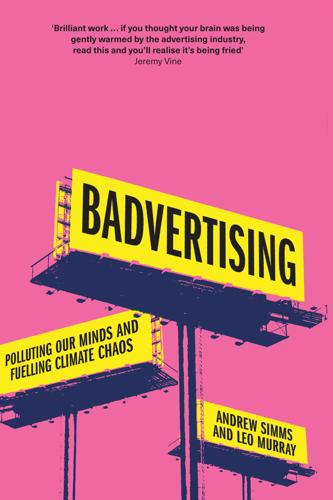
Badvertising
by
Andrew Simms
The sheer size of the SUV cars also creates a different problem – big wheels have been turned into aspirational, luxury items. But big wheels mean big tyres, which are more polluting than smaller tyres, because small pieces of rubber and synthetic materials – micro plastics – shed into the environment at a greater rate. Microplastic pollution from car tyres is one of the great, untold pollution scandals of our time. A report for the European Commission concluded that 500,000 tonnes of microplastic pollution were generated from tyre wear every year in the European Union,60 the annual figure given for the UK was 68,000 tonnes.61 Stung by these revelations, the tyre industry responded in a manner reminiscent of the tobacco industry seeking to minimise the importance of the threat.62 Electrifying cars solves for tailpipe emissions, but may even worsen particulate emissions from tyre and road wear.
…
Gas-guzzling Americans are asked. 14 November. www.theguardian.com/world/2002/nov/14/usa.oliverburkeman 59. Holder, Jim (2020) Autocar, 12 August. 60. Eunomia (2018) Investigating options for reducing releases in the aquatic environment of microplastics emitted by products, for the European Commission. www.eunomia.co.uk/reports-tools/investigating-options-for-reducing-releases-in-the-aquatic-environment-of-microplastics-emitted-by-products/ 61. Friends of the Earth (2018) Car tyres responsible for thousands of tonnes of UK plastic pollution. 22 November. 62. Reuters (2020) Tyre industry pushes back against evidence of plastic pollution. 7 September. www.euractiv.com/section/transport/news/tyre-industry-pushes-back-against-evidence-of-plastic-pollution/ 63.
…
Decaux Company 194 Jeep: advertisement 174ill Jeep Cherokee 111, 112−3, 119, 120, 123 Jenkin, Patrick 68 Jerez, Rodrigo de 57 Jet America airline 150 Johnson, Lyndon B. 111 Journal of Safety Research 115 Jowell, Tessa 76 Juniac, Alexandre de 142 junk food 8, 15 Kaldor, Nicholas 198 Karremans, Johan 23−4 Kassab, Gilberto 7 Kasser, Tim 9, 38, 41−3, 49−50, 51 Advdertising’s Role in Climate and Ecological Degradation 37, 41 Keltner, Dacher 17 Kerouac, Jack On the Road 109 Kings Cross underground fire (1987) 71 Kipchoge, Eliud 88 KLM Airline 155 Kramon, Glenn 127 Kyoto Protocol (1997) 136, 142 L’Oreal Company 197−8 Labour Government (Blair) 76−8 ban on cigarette advertising 79 Land Rover cars 107, 123, 124 Land Rover Defender 89, 125, 126, 161−3 advertisement 162ill Land Rover Freelander 124−5, 126 Las Vegas wedding chapel 109 Lausanne Sport FC 88, 90 Leveson Inquiry 201 Lexus 470 cars 127 Liberate Tate (organisation) 99, 100 Lindqvist, Sven Advertising is Lethal 180 Linn, Susan 9 Lipton’s Tea experiment 23−4 Liverpool 190 Living Streets (organisation) 7 local authorities: bans on advertising by 189−92 location tracking 35, 36 Lockwood, Miles 156 Loewenstein, George 52 lorries see trucks Los Angeles Marathon (2015) 94 Lufthansa Airline 155 lung cancer 56, 57−8 Lutz, Bob 111−2, 113 MacFarlane, Neil 69 Mad Men (tv programme) 147 Mainz SC 104 Manchester City FC 98 Margolyes, Miriam 69 Marlboro cigarettes 24, 63 Mastodon network 196 materialism 9, 37−43 McDonald’s 18, 155 Mercedes Formula One racing 88 microplastics pollution 130 Middle East Airlines 84 Midland Bank 71 Milligan, Spike 69 Mitchell, Warren 69 Mitsubishi Challenger 123−4 mobile tracking 35, 36 Mohaqeq, Sadra 195 Monro, Alison 72 Montulli, Lou 34 Morris, Francis 100 motorways 116−7 Moxham, John 63, 64, 71−2 Muller, Franz Hermannn Tobacco Misuse and Lung Carcinoma 58 Musk, Elon 196 Nairn, Agnes 40 Nash, Ogden 194 National No Smoking Day 71 National Portrait Gallery 99, 195 Netherlands 11, 189−90 Fossielvrij (organisation) 155 Reclame Fossielvrij (organisation) 11, 189 Netscape (internet service) 34 Network Rail 132 neuromarketing 14−15, 52−3 New Statesman x New Weather think tank 11 New York Airlines 150 New York State Journal of Medicine 57 New York Times 34 New Zealand: smoking ban in 79 newspapers: criminal practices by 200−1 Nexo cars 159 Nijmegen 189 Nissan cars 114 Nissan Leaf 129 Nissan Terrano 123 Noel-Baker, Francis 59 Nordstream gas pipeline 99 Norway ban on tobacco advertising in 64−5, 75 smoking ban in 79 Norwich 190 O’Leary, Michael 151 Occupy movement 8 Office of Communications (Ofcom) 154, 157−8 OGC Nice FC 87−8 Ogilvie, Charles 97 oil industry 3, 80−1, 85 Olympic Games 93, 95, 97, 102 (2020 Tokyo) 96 (1984 LA) 84 Summer Olympics (2032) 93 Winter Olympics 93 Olympique Lyonnais 96 Ontario University experiment (2015) 37−8 OpenX (advertising platform) 33−4 Operational Potential of Subliminal Perception CIA report (1958) 23 Pacific Southwest Airlines: advertisement 148ill, 150 package holidays 149 Pandolfo, Otavio and Gustavo 10 Paris Climate Agreement (2016) 85, 101 Patten, John 69 Pavitt, Laurie 68 personalisation 26−8 Peterson, Robert ‘A Cleaner Canada’ 81 PGA Tour 95 Philip Morris Company 62, 73, 79 Piff, Paul 17 Pigou, Arthur C. 59 Piolle, Eric 194 plastics industry 3 Platt, Sir Robert 59 Pole, Andrew 35 political parties: broadcasting by 199 Possible Campaign xii, 11 priming 14, 17−22, 24 probabilistic 35−6 product placement 25, 49 propaganda 29, 31 Public Media Alliance 196 Pucci, Emilio 147 Qashqai cars 114 Qatar Airways 154, 156 Questacon Science Museum 195 racism 124−5 Racketeer Influenced and Corrupt Organizations Act (1970) 62 Radio Times 63 Raffle, Angela 63 Rambo (film) 112 Range Rover cars 112 Rapaille, Clotaire 37, 113, 121 Rapid Transition Alliance Playing Against the Clock 95 Ratcliffe, Sir Jim 88 Ray-Ban sunglasses 25 Real Betis FC 104 Reckitt Company 44 Red Bull (drink) 19−20, 25−6 Red Star Belgrade FC 98, 99 regulators and regulation systems 157−61, 174−7 Reporters Without Borders 199−200 Republican Party Convention (2000) 24 R.H.

The Uninhabitable Earth: Life After Warming
by
David Wallace-Wells
Published 19 Feb 2019
bits that scientists are now calling “nanoplastics”: Amanda L. Dawson et al., “Turning Microplastics into Nanoplastics Through Digestive Fragmentation by Antarctic Krill,” Nature Communications 9, no. 1001 (March 2018), https://doi.org/10.1038/s41467-018-03465-9. 3.4 million microplastic particles: Courtney Humphries, “Freshwater’s Macro Microplastic Problem,” Nova, May 11, 2017, www.pbs.org/wgbh/nova/article/freshwater-microplastics. 225 pieces of plastic: Cookson, “The Problem with Plastic.” sixteen of seventeen tested brands: Ali Karami et al., “The Presence of Microplastics in Commercial Salts from Different Countries,” Scientific Reports 7, no. 46173 (April 2017), https://doi.org/10.1038/srep46173.
…
A majority of fish tested in the Great Lakes contained microplastics, as did the guts of 73 percent of fish surveyed in the northwest Atlantic. One U.K. supermarket study found that every 100 grams of mussels were infested with 70 particles of plastic. Some fish have learned to eat plastic, and certain species of krill are now functioning as plastic processing plants, churning microplastics into smaller bits that scientists are now calling “nanoplastics.” But krill can’t grind it all down; in one square mile of water near Toronto, 3.4 million microplastic particles were recently trawled. Of course, seabirds are not immune: one researcher found 225 pieces of plastic in the stomach of a single three-month-old chick, weighing 10 percent of its body mass—the equivalent of an average human carrying about ten to twenty pounds of plastic in a distended belly.
…
(“Imagine having to take your first flight out to sea with all that in your stomach,” the researcher told the Financial Times, adding: “Around the world, seabirds are declining faster than any other bird group.”) Microplastics have been found in beer, honey, and sixteen of seventeen tested brands of commercial sea salt, across eight different countries. The more we test, the more we find; and while nobody yet knows the health impact on humans, in the oceans a plastic microbead is said to be one million times more toxic than the water around it. Chances are, if we started slicing open human cadavers to look for microplastics—as we are beginning to do with tau proteins, the supposed markers of CTE and Alzheimer’s—we’d be finding plastic in our own flesh, too. We can breathe in microplastics, even when indoors, where they’ve been detected suspended in the air, and do already drink them: they are found in the tap water of 94 percent of all tested American cities.
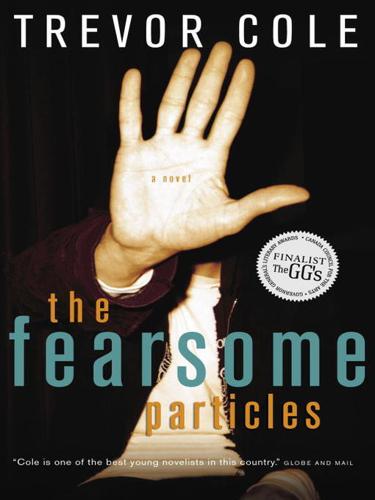
Fearsome Particles
by
Trevor Cole
Published 2 Jan 2006
He pressed the door to the ensuite shut and turned on the light, but no amount of rooting in the drawers or in the cabinet behind the mirror could unearth the clippers. There were small zippered makeup bags belonging to Vicki made of the kind of high-tech materials that might once have been vital in aerospace applications and Gerald admired the micro-fibre texture and tensile strength of these bags even as he pawed through the lipsticks and brushes and eye pencil shavings they contained. When he had exhausted the clipper potential of every drawer and shelf and countertop receptacle in the ensuite, Gerald sat on the edge of the bubble-jet tub and let his mind roam to other options.
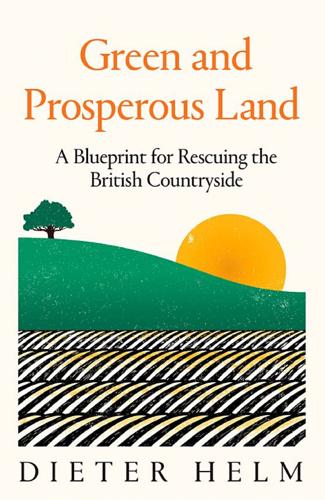
Green and Prosperous Land: A Blueprint for Rescuing the British Countryside
by
Dieter Helm
Published 7 Mar 2019
The plastics that now pervade our seas have only recently been recognised for the threat they pose, with every living creature likely to be polluted with plastic in one form or another. Plastics make up more than 75 per cent of marine litter. They are ubiquitous because they are so useful and because they take so long to biodegrade. Tonnes of plastic water bottles on the beaches are just the visible tip of the iceberg of microplastics in the natural food chains.14 The impacts of fishing are well researched, at least when it comes to the legal stuff and the recorded species for direct human consumption. Where once the impact of fishing was limited by sail, the coming of powered trawlers, and especially the diesel engine, meant that so much more could be caught.
…
Estuary: Out from London to the Sea, Penguin, 2016. 10 Dumping dredged muds and silts without consideration of the wider ecological consequences is a classic example of ‘out of sight, out of mind’. 11 Despite a very poor and partial review of the project by the former energy minister, Charles Hendry, the government wisely rejected the project’s request for a high guaranteed price in 2018. 12 The invasive Pacific oysters complicate the options. 13 Flushing tanks is technically illegal, but enforcement is minimal. 14 See House of Commons Environmental Audit Committee, ‘Environmental Impact of Microplastics’, HC 179, July 2016. 15 Hardin, G., ‘The Tragedy of the Commons’, Science, 162, 1968, pp. 1243–8. For a discussion see Helm, D., Natural Capital: Valuing the Planet, London: Yale University Press, 2015. 16 See Kurlansky, M., Cod: A Biography of the Fish that Changed the World, Vintage Publishing, 1999. 17 There have been recent signs of the gradual return of the blue-fin tuna.
…
Commissioned by the RSPB Hortin, T., Hamkes, L. and Witt, W., ‘Bluefin Tuna Off Britain and Ireland: Return of the Giant Tunny?’, British Wildlife, 402, August 2018 House of Commons Communities and Local Government Committee, ‘Public Parks: Seventh Report of Session 2016–17’, 30 January 2017 House of Commons Environmental Audit Committee, ‘Environmental Impact of Microplastics’, HC 179, July 2016 House of Commons Environmental Audit Committee, ‘The Government’s 25 Year Plan for the Environment: Eighth Report of Session 2017–19’, 24 July 2018 House of Commons Library, ‘Carbon Price Floor (CPF) and the Price Support Mechanism’, Briefing Paper, 8 January 2018, https://researchbriefings.parliament.uk/ResearchBriefing/Summary/SN05927 House of Commons Library, ‘The UK Bee Population’, CDP 2017/0226, 10 November 2017 House of Lords Economic Affairs Committee, ‘The Economics of High Speed 2’, 1st Report of Session 2014–15, HL Paper 134, March 2015 Igarashi, M., Song, C., Ikei, H. and Miyazaki, Y., ‘Effect of Stimulation by Foliage Plant Display Images on Prefrontal Cortex Activity: A Comparison with Stimulation Using Actual Foliage Plants’, Journal of Neuroimaging, 25(1), 2014, pp. 127–30 Institute for Fiscal Studies, ‘Reforming the Tax System for the 21st Century: The Mirrlees Review’, www.ifs.org.uk/publications/mirrleesreview Institute for Government, ‘Common Fisheries Policy’, www.instituteforgovernment.org.uk/explainers/common-fisheries-policy John Muir Trust, ‘Too Many Deer and Too Few Trees’, 23 December 2015, www.johnmuirtrust.org/about/resources/761-too-many-deer-and-too-few-trees Kurlansky, M., Cod: A Biography of the Fish that Changed the World.
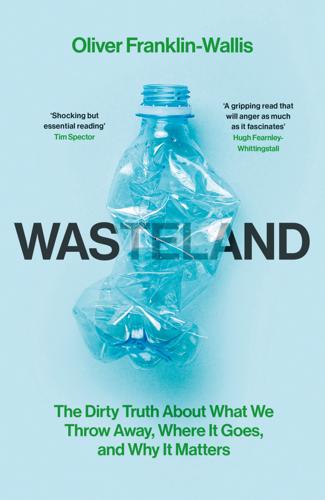
Wasteland: The Dirty Truth About What We Throw Away, Where It Goes, and Why It Matters
by
Oliver Franklin-Wallis
Published 21 Jun 2023
When plastics are broken down, by ultraviolet radiation, by the elements, or by force, they do not disintegrate so much as divide, their chain-like structures splitting into smaller and smaller pieces of themselves. Macroplastics become microplastics become nanoplastics. By then they are small enough to enter our bloodstreams, our brains, the placentas of unborn children. The impacts of these materials on our bodies are only just beginning to be understood; none are likely to be good. There are no firm figures on how many micro- and nanoplastic particles now pervade our planet, although one recent study estimated that the upper ocean alone contains 24.4 trillion microplastic particles.32 Polymers, from the Greek: many parts. * * * On a Thursday in March I arrive in Seaham, just south of Newcastle on England’s north-east coast – not too far, in fact, from Ellington landfill.
…
Recent studies have shown that sewage sludge spread on farmland can contain a number of chemical toxicants, including per- and polyfluoroalkyl substances (PFASs), dioxins, furans and PCBs.38 A recent study by the Environmental Working Group, a US non-profit, estimated that as many as 20 million acres of US farmland may already be contaminated.39 Sewage plants are designed to filter out microplastics – but using sludge as fertiliser dumps these plastics onto farmland, which can be taken up by animals, and washed into our rivers. In 2021, a research group in Sri Lanka found that compost was also a ‘prime source’ of microplastics found in surface soils; other toxic chemicals, such as metals and PFASs,40 can bind to these plastics in the soil.41 The effect on soil ecosystems is as yet poorly understood. It is unlikely to be good.
…
Provide your email again so we can register this ebook and send you more of what you like to read. You will continue to receive exclusive offers in your inbox. NOTES INTRODUCTION: THE TIPPING FLOOR 1 Imogen Napper, Bede F. R. Davies et al., ‘Reaching New Heights in Plastic Pollution – Preliminary Findings of Microplastics on Mount Everest’, One Earth 3(5), 2020: DOI: 10.1016/j.oneear.2020.10.020 2 A.J. Jamieson, L. Brooks et al. ‘Microplastics and synthetic particles ingested by deep-sea amphipods in six of the deepest marine ecosystems on Earth’, Royal Society Open Science 6(3), 2019: DOI: 10.1098/rsos.180667 3 United Nations Environment Programme, From Pollution to Solution: A Global Assessment of Marine Litter and Plastic Pollution, 2021. 4 Plastic Pollution Coalition, ‘New Research Shows The Great Pacific Garbage Patch is 3 Times The Size of France’, 2018: https://www.plasticpollutioncoalition.org/blog/2018/3/23/new-research-shows-the-great-pacific-garbage-patch-is-3-times-the-size-of-france 5 Raffi Khatchadourian, ‘The Elusive Peril Of Space Junk’, New Yorker, 21/09/2020: https://www.newyorker.com/magazine/2020/09/28/the-elusive-peril-of-space-junk 6 S.
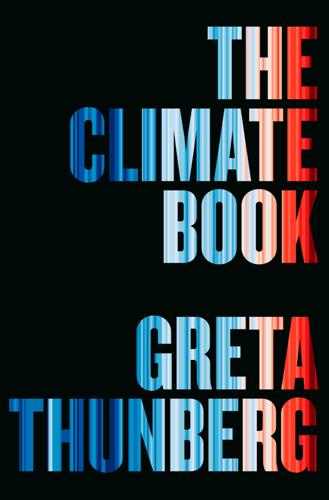
The Climate Book: The Facts and the Solutions
by
Greta Thunberg
Published 14 Feb 2023
Some of the local risks are familiar: we know big plastics such as shopping bags or fishing nets can result in entanglement, suffocation and starvation for whales, sea turtles, birds and other animals. The same thing happens with microplastics: copepods, tiny swimming predators, have been found with their legs ensnared in microplastic fibres and they fill their stomachs with microbeads. For potentially invasive but normally sedentary species, floating larger plastics are also an easy means to hitch a ride; likewise, surface ocean microplastics have been found that are coated with pathogenic bacteria and toxins. If shelled creatures such as oysters eat the coated microplastics (and they do), then the toxins can accumulate in their tissues and be passed on (along with the bacteria) to the person who eats them.
…
This has to be done to enable these marine species to thrive and to safeguard their role in climate mitigation and in providing food and coastal protection to humankind. / 2.13 Microplastics Karin Kvale Microplastics are not unlike manmade carbon dioxide (CO2) emissions. They are largely derived from the same sources as carbon-based fuels. Like CO2, they are long-lived pollutants and, like CO2, they arise from ubiquitous human activities. Both are accumulating in the atmosphere and the ocean, thanks to a combination of individual human contributions (such as exhaust emissions from tailpipes in the case of CO2, or degradation of tyres and brake pads in the case of microplastics), and collective ones (such as agricultural and industrial activities).
…
What might plastic in the oceans do on a global scale? It was recently revealed that microplastic particles in the atmosphere both scatter and absorb radiation, but it is still uncertain if the net effect is warming or cooling the planet. The ocean is a significant source of atmospheric microplastic because particles are tossed into the air by sea spray – so our continuing contamination of the ocean with plastics in the coming decades might pose some risk to climate commitments. However, modelling has shown that microplastics are potentially as disruptive to ocean oxygen levels as global warming. This is because tiny predators at the base of the food web sometimes eat microplastics instead of phytoplankton (tiny plants – their normal food), which has consequences for the function of the ecosystem as a whole.

Oryx and Crake
by
Margaret Atwood
Published 5 May 2003
He chews up a Three-Fruit Joltbar, savouring the familiar taste of banana oil and sweetened varnish, and feels the energy surge. Somewhere in all the running around yesterday he lost his water bottle, just as well considering what was in it. Bird dung, mosquito wrigglers, nematodes. He fills up an empty beer bottle with boiled water, then snaffles a standard-issue micro-fibre laundry bag from the bedroom, into which he packs the water, all the sugar he can find, and the half-dozen Joltbars. He rubs on sunblock and bags the rest of the tube, and puts on a lightweight khaki shirt. There’s a pair of sunglasses too, so he discards his old single-eyed ones. He deliberates over a pair of shorts, but they’re too big around the waist and wouldn’t protect the backs of his legs, so he hangs on to his flowered sheet, doubling it over, knotting it like a sarong.

Green Swans: The Coming Boom in Regenerative Capitalism
by
John Elkington
Published 6 Apr 2020
So in a public panel discussion featuring Nestlé’s new CEO Mark Schneider, I asked him how worried we should be about plastics in the oceans and, a media story that had broken days earlier, microplastics in bottled water. By way of background, here’s a sample of the sort of coverage that had appeared in The Guardian on the first day of our Brasilia event: The World Health Organisation (WHO) has announced a review into the potential risks of plastic in drinking water after a new analysis of some of the world’s most popular bottled water brands found that more than 90 percent contained tiny pieces of plastic. A previous study also found high levels of microplastics in tap water. In the new study, analysis of 259 bottles from 19 locations in nine countries across 11 different brands found an average of 325 plastic particles for every litre of water being sold.
…
See also: www.sciencedaily.com/releases/2017/07/170719140939.htm. 7.“The known unknowns of plastic pollution,” The Economist, March 3, 2018. See also: https://www.economist.com/international/2018/03/03/the-known-unknowns-of-plastic-pollution. 8.“WHO launches health review after microplastics found in 90 percent of bottled water,” The Guardian, 15 March 2018. See also: https://www.theguardian.com/environment/2018/mar/15/microplastics-found-in-more-than-90-of-bottled-water-study-says. 9.https://www.newplasticseconomy.org 10.Rob Dunn, “Science Reveals Why Calorie Counts Are All Wrong,” Scientific American, September 1, 2013. See also: https://www.scientificamerican.com/article/science-reveals-why-calorie-counts-are-all-wrong/. 11.
…
While researching this chapter I was invited to a showing of the film A Plastic Ocean2 and was fascinated to hear how the project helped to expose the growing threat posed by the global polymers industry. Producer Jo Ruxton had joined an expedition to the so-called Great Pacific Garbage Patch in the North Pacific Gyre, 1,500 miles off the coast of San Francisco. Her aim was to get a sense of what was going on. When the expedition unexpectedly discovered free-floating microplastics instead of an anticipated solid mass that could be contained, Jo knew the world had an even bigger problem than imagined and that she had to make the film. In their day, plastics were miracle materials, indeed still are. They came into their element when they helped the Allies win the Second World War, later becoming the backbone of modern industry and consumer lifestyles.

Grand Transitions: How the Modern World Was Made
by
Vaclav Smil
Published 2 Mar 2021
Their result, calibrated with data from ships and airborne surveys, put the floating total at 79,000 (45,000–129,000) t inside an area of 1.6 million km2: that is, a 4–16 times larger mass than previously reported. More than 75% of it is debris larger than 5 cm, fishing nets were nearly half of that total, and microplastics were 8% of the total mass but 94% of the estimated 1.8 (1.1–3.6) trillion floating pieces. These reports received widespread attention, but the highest concentrations of microplastics may be actually present in deep pelagic waters at depths between 200 and 600 m (Choy et al. 2019). Microplastics are also common in fresh waters (including the plastic microbeads from personal-care products and fibers separated during the laundering of synthetic fabrics) and on land, either through the application of sewage sludge or (as already noted in Chapter 3) after weathering and disintegration of protective plastic sheeting used in crop production when different size of torn materials become surface litter or soil contaminant (Rochman 2018).
…
In contrast, the diverse category of environmental degradations shares the commonality of a qualitative loss. Modern societies have subjected the biosphere to so many insults—ranging from the millennia-old mismanagement of arable soils to the residues of pesticides and medicines that remain present even in treated water (Schröder et al. 2016) and microplastic pollution in the ocean (Zarfl et al. 2011)—that I must limit my attention only to the most consequential degradative changes. Most of them fit into two broad categories of qualitative transformations and environmental pollution (the introduction of undesirable anthropogenic materials or mobilization of naturally occurring compounds with the potential for harm).
…
Wastewater treatment ranges from the simplest primary process (sedimentation and separation of heavy and floating solids) to secondary treatment (removal of suspended and dissolved matter) and to the most expensive, tertiary treatment, which removes nitrogenous and phosphorous compounds and disinfects the effluent. New categories of water pollution range from microplastics to potentially harmful residues. Perhaps the best example in the latter category is a growing use of pharmaceuticals and the absence of commercially available cost-effective treatments to remove their residues from wastewater. Municipal effluents, and the receiving water bodies, now commonly contain traces of such recalcitrant drugs as the painkiller diclofenac and the hormones 17β-estradiol and 17α-ethinylestradiol (Schröder et al. 2016).
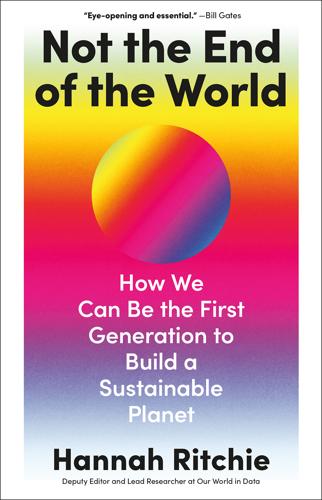
Not the End of the World
by
Hannah Ritchie
Published 9 Jan 2024
First, the bad news: there’s plastic in the ocean that we won’t be able to get out. We’ve all heard the statistics on how long plastics hang around in the environment – decades, if not centuries. This is partly true. Some compounds will take a long time to degrade. But some plastics break down much faster, creating microplastics.34 The problem with microplastics is that they are now pretty much everywhere, and we can’t get rid of them. However, I’m more optimistic about the larger pieces – the debris Captain Charles Moore saw. I wasn’t always so optimistic – you can find some of my scepticism in the internet archives. The internet is always there to unearth your old, embarrassing opinions.
…
Liebezeit, ‘Non-pollen particulates in honey and sugar’, Food Additives & Contaminants: Part A 30, 2136–40 (2013). 26 M. Revel, A. Châtel & C. Mouneyrac, ‘Micro(nano)plastics: A threat to human health?’, Curr Opin Environ Sci Health 1, 17–23 (2018). 27 J. Wang et al., ‘The behaviors of microplastics in the marine environment’, Mar Environ Res 113, 7–17 (2016). 28 L. I. Devriese et al., ‘Bioaccumulation of PCBs from microplastics in Norway lobster (Nephrops norvegicus): An experimental study’, Chemosphere 186, 10–16 (2017). 29 C. M. Rochman et al., ‘The ecological impacts of marine debris: unraveling the demonstrated evidence from what is perceived’, Ecology 97, 302–12 (2016). 30 S.
…
We can ingest them through the water we drink, the fish or meat we eat, and we can inhale and swallow them through the air.26 What happens to them when they enter the human body? We don’t know, but it’s possible they don’t hang around for very long.27, 28 One piece of evidence we have for this comes from fish: studies suggest that microplastic particles don’t stay around for long after they had been ingested. They pass through quickly. Most of the evidence – or maybe the lack of evidence – suggests that the plastic particles themselves are not a big concern for human health. There is also a question about whether they become a vehicle for other pollutants.
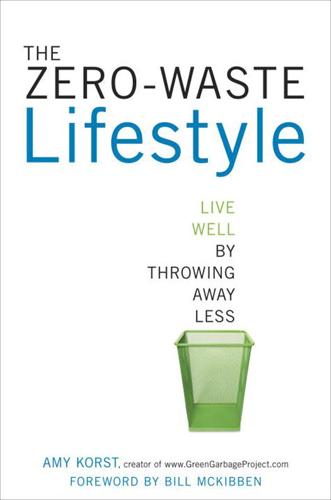
The Zero-Waste Lifestyle: Live Well by Throwing Away Less
by
Amy Korst
Published 26 Dec 2012
(Read more about the issues associated with disposing of plastic in chapter 4, “Recycle.”) Instead, plastic photodegrades, meaning the elements break it down into smaller and smaller particles until eventually these tiny particles become known as microplastics. These microplastics, when floating around in the ocean, can absorb what are known as persistent organic pollutants (POPs) such as DDT. Plastics absorb POPs at up to one hundred thousand to a million times the levels found in seawater. When microplastics are ingested by marine species like fish, they enter our food chain. The danger to us is called bioaccumulation, which means that we are absorbing a toxic chemical at a more rapid rate than our bodies can expel it.
…
As discussed in chapter 1, in the process of photodegrading, wind, sun, and water break plastic down into smaller and smaller parts that don’t lose their chemical composition as plastic. Eventually these particles get so small they are microscopic. Scientists and environmentalists are very concerned about the impact of these microplastics on the environment, especially the role they might play in the ocean ecosystem. If there wasn’t so much plastic in our oceans, this wouldn’t be such an issue. The problem is, it is estimated that the volume of plastic in our oceans is six times that of plankton, according to the website TreeHugger.com.
…
See Trash Garbage bags, 3.1, 5.1 Garbage Project Gas stations, 11.1 Gift cards Gifts ideas for packaging and receiving wrapping Girl Scouts, donating to Glad Rags Glass cleaning recycling, 4.1, 4.2, 4.3, 4.4 Global warming Gloves Goals, setting Golf balls Goodwill Green Dot program Green Garbage Project, itr.1, 2.1, epl.1, epl.2 Greeting cards Grout, cleaning H Hair, 2.1, 5.1, 7.1 accessories care products Halloween, 13.1, bm.1 Hand wipes HDPE (high density polyethylene) Herb crackers Herbs Heritage Turkey Foundation Highlighters Hobbies Holidays decorating for food for lights planning celebration of special traditions for Home-waste audit, conducting Hotels I Incinerators Independence Day Ink cartridges, 12.1, bm.1 Instant gratification, combating Invitations J Jack-o’-lanterns Jeans Jewel cases Jordan, Chris K Keep America Beautiful Kitchen tracking waste from zero-waste L Landfills Laundry detergent Laundry room tracking waste from zero-waste LDPE (low density polyethylene) Leachate, 1.1, 1.2 Leather Leave No Trace principles Leaves Leelyn, Lou Lemon juice Leonard, Annie Life cycle, of products Lightbulbs, 4.1, bm.1 Linen spray Lint brushes Litter, itr.1, 1.1, epl.1, epl.2, epl.3 Livestrong bracelets Local businesses, supporting, itr.1, 2.1 Local Harvest Locks of Love Loofah sponges, 5.1, 7.1 Lou’s Upcycles Lunapads Lunch baggies Lush.com, 7.1 M Makeup, 7.1, bm.1 Manufacturers, responsibility of Marine litter Masking tape Matches, used Meat, 2.1, 5.1, 5.2, 6.1, 13.1 Medical appointments Medical products, 2.1, 7.1 Menstrual pads, 7.1, 7.2 Mesh produce bags, 3.1, 6.1 Metal, recycling, 4.1, 4.2, 4.3, bm.1 Methane, 1.1, 1.2 Microplastics, 1.1, 4.1 Milk cartons Mirrors MRFs (Materials Recovery Facilities) MSW (municipal solid waste), 1.1, 1.2 Mulch N Nail clippings Napkins, paper, 3.1, 4.1, 5.1 National Costume Swap Day Newspapers, 1.1, 4.1, 5.1 New Year’s Eve Nut shells O Obsolete items Oceans, trash in, 1.1, 4.1 Office supplies Oils cooking removing stains of Olympic National Park, epl.1 Oregon Caves National Monument Organizations, with zero-waste goals Origins.com, 7.1 Outdoor spaces, tracking waste from Oven cleaner P Packaging composite materials as as percent of waste recycling, 2.1, 4.1 responsibility of manufacturers for Paper bags, 3.1, 5.1 butcher composting cups egg cartons napkins, 3.1, 4.1, 5.1 plates recycling, 4.1, 4.2, 4.3 shredded, 4.1, 5.1 tablecloths tissue, 4.1, 4.2 towels waxed, 4.1, 5.1 in the workplace Paper clips Parkinson’s Law of Garbage Parties Halloween New Year’s Eve at work, 2.1, 12.1 Pawn shops Peanuts, packing Pencils Pencil shavings, 5.1, 12.1 Pens, 3.1, 12.1, bm.1 PET/PETE (polyethylene terephthalate) Pets food and treats for, 5.1, 6.1 toys for waste from, 2.1, 5.1, 5.2 Pizza boxes Plane, traveling by Plants, 5.1, 13.1 Plastic bags, 3.1, 4.1 bottle caps cards compostable containers, reheating food in recycling, 4.1, 4.2, 4.3, 4.4, bm.1 silverware straws, 3.1, 4.1 stretchy trash Plates, paper POPs (persistent organic pollutants) Potpourri PP (polypropylene) Precycling Prescription bottles Preserve Gimme 5, 4.1, 4.2, bm.1 Produce bags, 3.1, 6.1 Produce stickers, 4.1, bm.1 Product stewardship PS (polystyrene) PVC (polyvinyl chloride), 4.1, 4.2, 13.1 R Raffia Rags Rathje, William, 1.1, 2.1, 5.1 Rawhide dog chews Razors Receipts Recipes Recycling commingled, 4.1, 4.2 composting as determining suitability for, 2.1, 4.1, 4.2, 4.3, 4.4 guide to of “hand-carry” items, 4.1, 4.2, 4.3 local requirements for, 4.1, 4.2 plastics process of rates of, 1.1, 1.2, 1.3 setting up system for strategies for, 4.1, 4.2 transportation costs and, 4.1, 4.2 traveling and waste hierarchy and, 3.1, 4.1, 4.2 Reducing, 3.1, 3.2, 3.3 Resorts Restaurants Restrooms, public Reusing, 3.1, 3.2 Rhythm method Ribbon Ricotta cheese Rope S St.

Apocalypse Never: Why Environmental Alarmism Hurts Us All
by
Michael Shellenberger
Published 28 Jun 2020
The scientists seemed shocked by what they discovered: “The global weight of plastic pollution on the sea surface, from all size classes combined, is only 0.1 percent of the world annual production.”40 Even more astonishing, they found a hundred times less microplastic than they had been expecting to find. So where are all the microplastics going? The scientists named several possibilities. First, as large plastics get broken down into smaller and smaller particles, they start degrading ever more rapidly because the “volume relationship is increased dramatically and oxidation levels are higher, enhancing their biodegradation potential.”41 Second, the sea life eating plastic waste appear to be “packaging microplastics into fecal pellets, thus enhancing sinking.” While eating plastic can negatively impact the health of sea birds and mammals, it appears to also be contributing to “the removal of small microplastics from the sea surface.”42 In the end, the scientists emphasized how much we still don’t know.
…
While eating plastic can negatively impact the health of sea birds and mammals, it appears to also be contributing to “the removal of small microplastics from the sea surface.”42 In the end, the scientists emphasized how much we still don’t know. “The question ‘where is all the plastic?’ remains unanswered,” they concluded, “highlighting the need to investigate the many processes that play a role in the dynamics of macro-, meso-, and microplastics in the world’s oceans.”43 Five years later, another group of scientists offered another possibility, at least for one of the most vexing forms of plastic waste: polystyrene, the plastic used in Styrofoam, plastic utensils, and endless other products.
…
The same molecular property that made polystyrene molecules hard for microbes to eat was just the feature that made them vulnerable to having their bonds broken by sunlight. The scientists said their study was the first to provide direct proof of how, and how fast, sunlight breaks down polystyrene first into microplastics, then into individual molecules, and then into its elemental building blocks.46 One of the best pieces of good news to emerge from the study was that certain additives used to shape the flexibility, color, and other qualities of polystyrene can speed up or slow down its disintegration by sunlight in water.
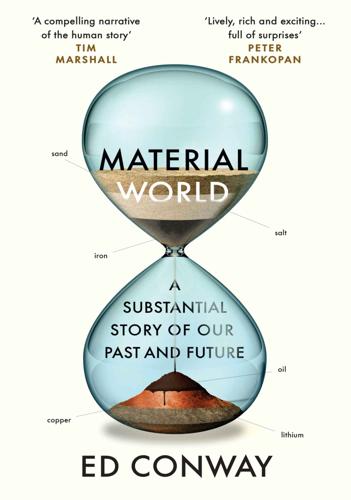
Material World: A Substantial Story of Our Past and Future
by
Ed Conway
Published 15 Jun 2023
The substances we created that helped us transcend the need for traditional raw materials such as metals and stone have degraded into a symbol of the Anthropocene. Except that they haven’t degraded at all; this is rather the problem. They are still very much with us, sometimes visible to the naked eye, sometimes not. There are microplastics in the ocean, microplastics wafting undetected through most of our homes, microplastics even in uninhabited parts of the world, high up in the mountains, scattered there on the wind. Each month brings new research about the dangers of plastics to animals, humans and the wider environment. We are learning that plastics can leach toxic chemicals into their surroundings, that they can harbour antibiotic-resistant bacteria, and that, when ground down to nanoplastic scale, they can even pass through biological membranes, possibly into the brain.
…
Ellis, 2005). 9 Claudia Flavell-While, ‘Dermot Manning and colleagues at ICI – Plastic Fantastic’, Chemical Engineer , 1 November 2001, https://www.thechemicalengineer.com/features/cewctw-dermot-manning-and-colleagues-at-ici-plastic-fantastic/ . 10 Norton, Ten Materials . 11 Freinkel, Plastic . 12 IEA, The Future of Petrochemicals (IEA, 2018). 13 Chris DeArmitt, The Plastics Paradox: Facts for a Brighter Future (Phantom Plastics, 2020). 14 Jon Gertner, The Idea Factory: Bell Labs and the Great Age of American Innovation (Penguin, 2013). 15 Alice A. Horton, ‘Plastic Pollution: When Do We Know Enough?’, Journal of Hazardous Materials 422 (January 2022); ‘Microplastics in household dust could promote antibiotic resistance’, The Economist , 10 November 2021, https://www.economist.com/science-and-technology/microplastics-in-household-dust-could-promote-antibiotic-resistance/21806204 . 16 IEA, World Energy Outlook 2022 (IEA, 2022). Postscript: Peak Oil 1 ‘North Field: Sharing the Weight of the World?’, Thunder Said Energy, 28 July 2022, https://thundersaidenergy.com/2022/07/28/north-field-sharing-the-weight-of-the-world/ . 2 Vaclav Smil, ‘What We Need to Know about the Pace of Decarbonization’, Substantia 3/2 (2919), Supplement 1: pp. 13–28. 3 Demand projections from Announced Pledges Scenarios in IEA World Economic Outlook 2022 (IEA, 2022), and from BP Energy Outlook 2023 Edition (BP, 2023). 16.
…
We are learning that plastics can leach toxic chemicals into their surroundings, that they can harbour antibiotic-resistant bacteria, and that, when ground down to nanoplastic scale, they can even pass through biological membranes, possibly into the brain. While the damage to oceanic species has sometimes been overstated, there is little doubt that plastic pollution has spread in the seas. The proportion of oceans speckled with microplastics is still small, but given we only invented these materials a few generations ago, and given the quantity of plastic we have produced in the past decade and a bit, this is not especially reassuring.15 Many countries have now banned single-use plastic shopping bags and other items like plastic straws.

Stakeholder Capitalism: A Global Economy That Works for Progress, People and Planet
by
Klaus Schwab
Published 7 Jan 2021
Moreover, there is the issue of plastics, whose impact will be felt most dramatically in the coming decades, as the plastic that is currently accumulating in the world's oceans may affect life on land in a myriad of ways. Microplastics have become ubiquitous in the world's water, in part because they take decades to decompose: by current measures, it is estimated we could end up with more plastic than fish in our oceans by 2050.73 The most famous example in popular imagination is the “Great Pacific Garbage Patch” consisting largely of the debris of microplastics in the Pacific Ocean. But the issue is a global one, affecting all of the world's bodies of water. Second, almost two-thirds of the world's cities also exceed WHO guidelines on air pollution, according to Greenpeace.74 Many of the large metropoles of Asia are so polluted it is unhealthy even to walk outside,75 as many who live or have been there will be able to attest.
…
Møller–Mærsk) [Denmark], 90, 167–168, 199–201, 202–207, 208, 213, 215 Mærsk Drilling, 205 Mærsk Mc-Kinney Møler ship, 200 Mærsk Oil, 205 Mærsk Tankers, 205 Magellan, Ferdinand, 101 Maisonrouge, Jacques, 11 Ma, Jack, 128 Majendie, Adam, 229 Majority Action, 216 Malaysia economic recession (1997) in, 98 inclusive approach to government in, 186 predicted economic growth (2020–2021) in, 65–66 Maluku islands spices, 97 MAN Energy Solutions (Denmark), 117–118 Mao Zedong, 56, 57 Marco Polo, 99 Marriage rights (Singapore), 123 Marshall, George, 6 Marshall Plan (US), 6–7 Marx, Karl, 105, 131 Massey University, 223 Maybach (German manufacturer), 4 Mazzucato, Mariana, 112, 184–185, 191, 234 McKinley, William, 133 McKinsey's Global Institute, 197 Medicaid, 135 Medicare, 135 Megacities, 159 Mellon, Andrew, 132 Mercedes (Germany), 9 Merkel, Angela, 79, 81, 83 #Me Too movement, 250 Mexico health coverage disparities in, 43 IT and Internet revolution role in expanding economy of, 137 “21st century socialism” of, 225 Micronesia, 181 Microplastics pollution, 50 Microsoft (US), 69, 126, 127, 137, 143, 209, 211 EU's anti-competition ruling against, 139–140, 141 Microsoft Office and Microsoft Windows products of, 139 Middle Eastern countries emerging markets in, 63 Locust–19 plague (2020) in, 176 OPEC membership among, 12 Migration increasing tendency of countries to stem, 177 as reminder of interconnectedness of people, 177 Migration Agency (IOM) [UN], 52 Milanovic, Branko, 45, 46, 84, 137, 138, 173 Milanovic's First Technological Revolutions, 45fig–46 Minimum rights rules (European Parliament) [2019], 243 Les Misérables (Hugo), 131 Mittelstand (Germany), 7, 12 Modern Company Management in Mechanical Engineering (Schwab, Kroos, Maschinenbau-Anstalten), 174, 175fig Modi, Prime Minister (India), 68 Modrow, Hans, 78 Mohammed, 99 Møller, A.
…
See China (People's Republic) PepsiCo (US), 250 Persson, Mayson, 149 Peru, 64 Philippines economic recession (1997) in, 98 post-war economy of, 6 predicted economic growth (2020–2021) in, 65–66 tech unicorns of, 66, 67fig Philippon, Thomas, 140, 142 Philips (The Netherlands), 215, 250 Physical capital definition of, 235 New Zealand's Living Standards Framework on, 235fig–236 Pichai, Sundar, 69 Piketty, Thomas, 38 Ping an Insurance, 60 PISA (Programme for International Student Assessment) ranking, 230 Pitchfork protests (2013) [Italy], 86 Pittsburgh (Pennsylvania), 159 Planet at the center of the global stakeholder model, 180fig at the center of the simplified stakeholder model, 178fig–179 a post-COVID world and sustainable economy for the, 251 as the responsibility of every stakeholder, 176 as Stakeholder Capitalism Metrics pillar, 214 See also Environmental issues; People; Stakeholder model Platform on Biodiversity and Ecosystems Services (IPBES) report [2019], 51 Poland Solidarity movement in, 83 stakeholder approaches to major challenges in, 195 Political divisions checks and balances and robust institutions to heal, 185, 193–198 erosion of the political center creating, 80–90 need to overcome our, 194 See also Democracy Political parties erosion of political center of, 80–90 existential crisis facing todays, 188 See also specific party Pollution Asian economic growth and, 72 CO2 emissions, 160, 161, 165–166, 182, 200, 202, 203, 207 impact on natural ecosystems by, 50 microplastics, 50 as negative impact of globalization, 107 WHO guidelines on air, 50 WHO on unsafe air (2019) due to, 72 See also Climate change; Global warming; Greenhouse gases Pony Ma, 60 Population Baby boom (1950s and 1960s), 8, 9, 105, 135, 154, 160 demographic change megatrend, 160–161 GFN of growing global, 48–49 increasing rates of, 48–49 megacities, 159 urbanization megatrend, 159–160 Populism erosion of the political center and rise of, 80–90 increasing nationalism and, 84 Porsche (German manufacturer), 9 Preindustrial Revolution, 45fig, 129–130 Principles of governance description of, 214 as Stakeholder Capitalism Metrics pillar, 214 Productivity growth declining, 33–34 “decoupling” of wages from, 34 during golden age of capitalism, 33–34 Proposition C referendum (San Francisco), 212–213 Prosperity description of the elements of, 214 Legatum Prosperity Index (2019) ranking, 231 as Stakeholder Capitalism Metrics pillar, 214 stakeholder government role in enabling equitable, 178–179, 225 success of New Zealand and Singapore in creating, 249 See also Environment, social, and governance (ESG) objectives; Income equality; People Puar, Puty, 95, 96, 107, 110 Public debt COVID-19 pandemic and increasing, 19, 29–30 increasing rates of predicted, 28 population pyramid and repayment of, 30 Public health care spending dramatic increase (2000–2016) of, 32 in OECD countries, 32 Purchasing power parity (PPP), Financial Times reporting on Asian GDP (2020), 70–71 PwC (US), 126, 215, 250 Q Qambrani, Tanzeela, 245–246 Qing Imperial dynasty (China), 56 QQ social media app (China), 60 Qualcomm, 141 Quebec (Canada), 167 R Racism against Sheedi population in Pakistan, 245–246 Black Lives Matter protests against, 186, 243, 246, 250 history of US school segregation and, 226 redlining practice of housing discrimination, 226 Rapin, Philippe, 163–164 Ravensburger Pact (1997), 17 Ravensburger (Germany), 5, 7, 8, 9, 19, 251 Reagan, Ronald, 77, 122 Redlining practice, 226 Reed, John, 71 “Reefer ships” (1870s), 104, 110 Reform and Opening Up policy (1979) [China], 15, 18, 36, 57, 59, 72 Reformation, 130 Reich, Robert, 122 Reliance Industries (India), 68 Renaissance, 130 Ren Zhenfei, 60 Renzi, Prime Minister (Germany), 81 Republic of Korea.

Stakeholder Capitalism: A Global Economy That Works for Progress, People and Planet
by
Klaus Schwab
and
Peter Vanham
Published 27 Jan 2021
Moreover, there is the issue of plastics, whose impact will be felt most dramatically in the coming decades, as the plastic that is currently accumulating in the world's oceans may affect life on land in a myriad of ways. Microplastics have become ubiquitous in the world's water, in part because they take decades to decompose: by current measures, it is estimated we could end up with more plastic than fish in our oceans by 2050.73 The most famous example in popular imagination is the “Great Pacific Garbage Patch” consisting largely of the debris of microplastics in the Pacific Ocean. But the issue is a global one, affecting all of the world's bodies of water. Second, almost two-thirds of the world's cities also exceed WHO guidelines on air pollution, according to Greenpeace.74 Many of the large metropoles of Asia are so polluted it is unhealthy even to walk outside,75 as many who live or have been there will be able to attest.
…
Møller–Mærsk) [Denmark], 90, 167–168, 199–201, 202–207, 208, 213, 215 Mærsk Drilling, 205 Mærsk Mc-Kinney Møler ship, 200 Mærsk Oil, 205 Mærsk Tankers, 205 Magellan, Ferdinand, 101 Maisonrouge, Jacques, 11 Ma, Jack, 128 Majendie, Adam, 229 Majority Action, 216 Malaysia economic recession (1997) in, 98 inclusive approach to government in, 186 predicted economic growth (2020–2021) in, 65–66 Maluku islands spices, 97 MAN Energy Solutions (Denmark), 117–118 Mao Zedong, 56, 57 Marco Polo, 99 Marriage rights (Singapore), 123 Marshall, George, 6 Marshall Plan (US), 6–7 Marx, Karl, 105, 131 Massey University, 223 Maybach (German manufacturer), 4 Mazzucato, Mariana, 112, 184–185, 191, 234 McKinley, William, 133 McKinsey's Global Institute, 197 Medicaid, 135 Medicare, 135 Megacities, 159 Mellon, Andrew, 132 Mercedes (Germany), 9 Merkel, Angela, 79, 81, 83 #Me Too movement, 250 Mexico health coverage disparities in, 43 IT and Internet revolution role in expanding economy of, 137 “21st century socialism” of, 225 Micronesia, 181 Microplastics pollution, 50 Microsoft (US), 69, 126, 127, 137, 143, 209, 211 EU's anti-competition ruling against, 139–140, 141 Microsoft Office and Microsoft Windows products of, 139 Middle Eastern countries emerging markets in, 63 Locust–19 plague (2020) in, 176 OPEC membership among, 12 Migration increasing tendency of countries to stem, 177 as reminder of interconnectedness of people, 177 Migration Agency (IOM) [UN], 52 Milanovic, Branko, 45, 46, 84, 137, 138, 173 Milanovic's First Technological Revolutions, 45fig–46 Minimum rights rules (European Parliament) [2019], 243 Les Misérables (Hugo), 131 Mittelstand (Germany), 7, 12 Modern Company Management in Mechanical Engineering (Schwab, Kroos, Maschinenbau-Anstalten), 174, 175fig Modi, Prime Minister (India), 68 Modrow, Hans, 78 Mohammed, 99 Møller, A.
…
See China (People's Republic) PepsiCo (US), 250 Persson, Mayson, 149 Peru, 64 Philippines economic recession (1997) in, 98 post-war economy of, 6 predicted economic growth (2020–2021) in, 65–66 tech unicorns of, 66, 67fig Philippon, Thomas, 140, 142 Philips (The Netherlands), 215, 250 Physical capital definition of, 235 New Zealand's Living Standards Framework on, 235fig–236 Pichai, Sundar, 69 Piketty, Thomas, 38 Ping an Insurance, 60 PISA (Programme for International Student Assessment) ranking, 230 Pitchfork protests (2013) [Italy], 86 Pittsburgh (Pennsylvania), 159 Planet at the center of the global stakeholder model, 180fig at the center of the simplified stakeholder model, 178fig–179 a post-COVID world and sustainable economy for the, 251 as the responsibility of every stakeholder, 176 as Stakeholder Capitalism Metrics pillar, 214 See also Environmental issues; People; Stakeholder model Platform on Biodiversity and Ecosystems Services (IPBES) report [2019], 51 Poland Solidarity movement in, 83 stakeholder approaches to major challenges in, 195 Political divisions checks and balances and robust institutions to heal, 185, 193–198 erosion of the political center creating, 80–90 need to overcome our, 194 See also Democracy Political parties erosion of political center of, 80–90 existential crisis facing todays, 188 See also specific party Pollution Asian economic growth and, 72 CO2 emissions, 160, 161, 165–166, 182, 200, 202, 203, 207 impact on natural ecosystems by, 50 microplastics, 50 as negative impact of globalization, 107 WHO guidelines on air, 50 WHO on unsafe air (2019) due to, 72 See also Climate change; Global warming; Greenhouse gases Pony Ma, 60 Population Baby boom (1950s and 1960s), 8, 9, 105, 135, 154, 160 demographic change megatrend, 160–161 GFN of growing global, 48–49 increasing rates of, 48–49 megacities, 159 urbanization megatrend, 159–160 Populism erosion of the political center and rise of, 80–90 increasing nationalism and, 84 Porsche (German manufacturer), 9 Preindustrial Revolution, 45fig, 129–130 Principles of governance description of, 214 as Stakeholder Capitalism Metrics pillar, 214 Productivity growth declining, 33–34 “decoupling” of wages from, 34 during golden age of capitalism, 33–34 Proposition C referendum (San Francisco), 212–213 Prosperity description of the elements of, 214 Legatum Prosperity Index (2019) ranking, 231 as Stakeholder Capitalism Metrics pillar, 214 stakeholder government role in enabling equitable, 178–179, 225 success of New Zealand and Singapore in creating, 249 See also Environment, social, and governance (ESG) objectives; Income equality; People Puar, Puty, 95, 96, 107, 110 Public debt COVID-19 pandemic and increasing, 19, 29–30 increasing rates of predicted, 28 population pyramid and repayment of, 30 Public health care spending dramatic increase (2000–2016) of, 32 in OECD countries, 32 Purchasing power parity (PPP), Financial Times reporting on Asian GDP (2020), 70–71 PwC (US), 126, 215, 250 Q Qambrani, Tanzeela, 245–246 Qing Imperial dynasty (China), 56 QQ social media app (China), 60 Qualcomm, 141 Quebec (Canada), 167 R Racism against Sheedi population in Pakistan, 245–246 Black Lives Matter protests against, 186, 243, 246, 250 history of US school segregation and, 226 redlining practice of housing discrimination, 226 Rapin, Philippe, 163–164 Ravensburger Pact (1997), 17 Ravensburger (Germany), 5, 7, 8, 9, 19, 251 Reagan, Ronald, 77, 122 Redlining practice, 226 Reed, John, 71 “Reefer ships” (1870s), 104, 110 Reform and Opening Up policy (1979) [China], 15, 18, 36, 57, 59, 72 Reformation, 130 Reich, Robert, 122 Reliance Industries (India), 68 Renaissance, 130 Ren Zhenfei, 60 Renzi, Prime Minister (Germany), 81 Republic of Korea.
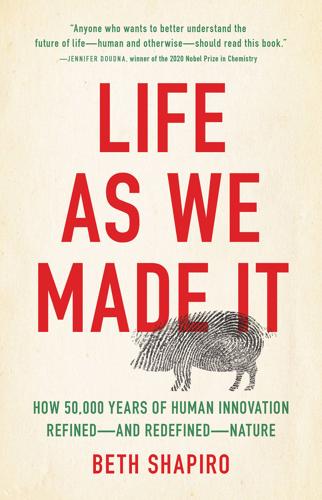
Life as We Made It: How 50,000 Years of Human Innovation Refined--And Redefined--Nature
by
Beth Shapiro
Published 15 Dec 2021
Existing PHA-based products include capsules for slow-release agricultural fertilizers, microbeads for facial scrubs, microplastics that improve the UV-blocking properties of sunscreens, grocery packaging for fruits and vegetables, and single-use cups and cutlery for fast food chains. The largest market for PHAs today is mulching film—the plastic barrier that farmers place over cultivatable land to prevent weeds from penetrating crops. Mulching film is often plowed back into the soil at the end of each growing season, where it disintegrates into microplastics that stick around for hundreds of years. Mulching film made of PHAs will instead biodegrade.
…
It is not, however, an island of garbage across which one might be able to walk. Some ocean trash explorers have found a few conglomerations of larger bits of plastic—baskets, buckets, fishing nets, sneakers, candy wrappers, toothbrushes, soap bottles—but the garbage patch comprises mostly tiny broken-down bits of microplastic that look like large grains of pepper floating in a giant bowl of ocean soup. The Great Pacific Garbage Patch is also not the only ocean garbage patch, it’s just the most famous of them. Five ocean garbage patches—two in the Pacific Ocean, one in the Indian Ocean, and two in the Atlantic Ocean—accumulate where rotating ocean currents called gyres suck in and aggregate trash as it floats across the ocean.
…
In a landfill (or deep in the water column), plastic buried under meters of other trash (or water) will have little exposure to UV light and will degrade slowly, perhaps taking more than 400 years to break down. Although plastic floating at or near the ocean surface will break down more quickly, plastics disintegrate rather than dissolve or disappear, eventually becoming the microplastic soups that are our ocean’s garbage patches. In the meantime, people continue to dump around 8 million tons of plastic into the world’s oceans every year. And our dependence on plastics for storage, packaging, clothing, and other products continues to grow. Recently, chemical engineers have begun to tweak synthetic polymers to create partially or even entirely biodegradable plastics.
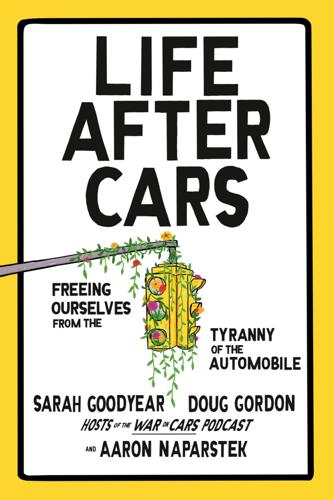
Life After Cars: Freeing Ourselves From the Tyranny of the Automobile
by
Sarah Goodyear
,
Doug Gordon
and
Aaron Naparstek
Published 21 Oct 2025
Ingraham, “Physicians Picket Automobile Show,” New York Times, April 8, 1965, nytimes.com/1965/04/08/archives/physicians-picket-automobile-show-safety-defects-in-new-cars.html. GO TO NOTE REFERENCE IN TEXT Scientists in California: Rosanna Xia, “The Biggest Likely Source of Microplastics in California Coastal Waters? Our Car Tires,” Los Angeles Times, October 2, 2019, latimes.com/environment/story/2019-10-02/california-microplastics-ocean-study. GO TO NOTE REFERENCE IN TEXT Particles from brake wear: “Air Pollution Particles,” University of Technology, Sydney. GO TO NOTE REFERENCE IN TEXT “massively serious health problem”: Sarah Goodyear, host, The War on Cars, podcast, episode 108, “Traffication with Paul Donald,” July 18, 2023, thewaroncars.org/2023/07/18/108-traffication-with-paul-donald.
…
After the driver loads the garbage he’s collected into the back of the vehicle, he sits and watches with benevolent self-satisfaction as baby turtles emerge from the sand and crawl over the beach. Kia called the spot “Beachcomber.” On Reddit, the savior dude came to be known as Sea Turtle Jesus, and he was roundly ridiculed. As one commenter said there, “Nothing says ‘save our planet!!!!’ like driving a 3-ton, microplastic and COx-noxious-emitting urban sprawl tank immediately next to a rapidly acidifying ocean.” While advocacy groups might struggle to break through the cluttered media landscape and communicate the gravity of the climate crisis, carmakers don’t have that problem. They are the clutter. The auto industry, in fact, has made the ability to access nature a core part of its own lavishly funded messaging campaigns.
…
Yet pollution generated by motor vehicles still is a major contributor to dirty air, and it is still killing and disabling us in numbers that would be unacceptable if they were the fallout of any other consumer product. It’s worth noting, too, that eliminating tailpipes altogether, as electric cars do, doesn’t get rid of pollution that harms human health, because electric cars don’t eliminate the spread of microplastics and other toxic chemicals. Scientists in California looking at plastic particles in ocean water believe that tire dust and fragments probably are the largest source of this pollution. Particles from brake wear contribute to high levels of magnetite in the environment that have been linked to the development of Alzheimer’s disease, one of the leading causes of death among older people globally.
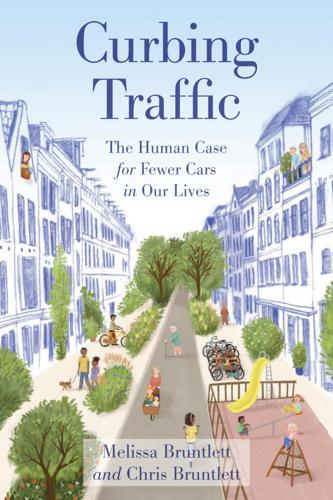
Curbing Traffic: The Human Case for Fewer Cars in Our Lives
by
Chris Bruntlett
and
Melissa Bruntlett
Published 28 Jun 2021
Accessed June 6, 2020. https://www.statista.com/chart/21408/time-americans-spend-indoors-outdoors/. Buffel, Tine, Sophie Handler, and Chris Phillipson. Age-Friendly Cities and Communities: A Global Perspective. Policy Press, 2019. Carrington, Damian. “Car Tyres Are Major Source of Ocean Microplastics—Study.” Accessed July 21, 2020. https://www.theguardian.com/environment/2020/jul/14/car-tyres-are-major-source-of-ocean-microplastics-study/. Chaput, Jean-Philippe, Caroline Dutil, and Hugues Sampasa-Kanyinga. “Sleeping Hours: What Is the Ideal Number and How Does Age Impact This?” Nature and Science of Sleep, 2018. Collarte, Natalia. The Woonerf Concept: Rethinking a Residential Street in Somerville.
…
They are a significant contributor to climate change, accounting for one-fifth of all emissions in the United States—around 24 pounds (11 kilograms) of carbon dioxide for every gallon (3.8 liters) of fossil fuels burned. But these problems don’t begin and end at the fuel source. Tires and brake pads emit 550,000 metric tonnes (606,271 US tons) of microplastics (particles smaller than 0.01 millimeters or 0.0004 inches) each year, with nearly half ending up in the ocean. Over 80,000 metric tonnes (88,185 US tons) end up on ice- and snow-covered areas, increasing melting as they absorb heat. This problem is likely to get worse before it gets better, as electric cars are heavier than internal combustion engine cars, which means more stress on the vehicle’s tires and brakes.
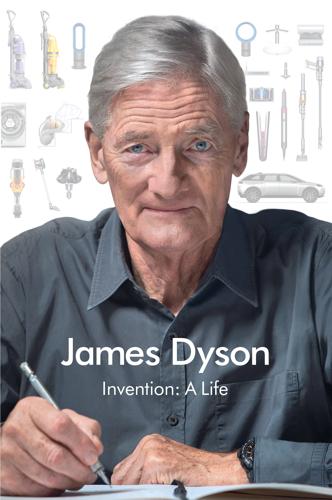
Invention: A Life
by
James Dyson
Published 6 Sep 2021
I have to mention a few more to show how invention courses through the minds of talented young people and can lead, at a young age, to products that we can use in our everyday lives and that can create jobs and further livelihoods, too. These people are not just talking and grandstanding, they are driving actual change. The U.K. national winners in 2020 were The Tyre Collective, four students who set out to solve the enormous yet little discussed microplastic problem of tire wear. Every time a vehicle brakes, accelerates, or turns a corner, the tires wear down and throw out tiny fragments, producing half a million tons of tire particles annually in Europe alone. These particles are small enough to become airborne and can have an adverse effect on health.
…
Became an AWS certified Cloud Practitioner, whilst deploying a cost saving improvement to the Dyson cloud infrastructure—at Dyson’s Bristol office. Learnt about rotor dynamics and used CAD to construct a visualisation rig whilst working in the Dyson Motors’ Mechanical team. Pitched and led a summer series project on capturing micro-plastics from our waterways which won the “Most Linked Project to the UN Sustainable Development Goals” award. All the best William Thoburn Undergraduate Engineer The Dyson Institute of Engineering and Technology I give talks about design, as does Jake, to the undergraduates. I like to show them products where engineering and design are one and the same thing and all the better for it, like the Toio floor lamp Achille Castiglioni designed for Flos in 1962.
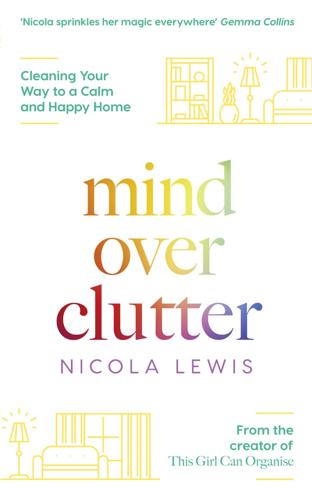
Mind Over Clutter
by
Nicola Lewis
Published 26 Feb 2019
Once you’ve tried it, you’ll never use anything else. You will need: 1 clean large spray bottle (reuse one from an old cleaning product and stick on a new label) 120ml light olive oil 10 drops lemon essential oil Combine the olive oil and essential oil in the spray bottle, then simply spray onto a damp microfibre cloth and wipe the surface of the leather or wood. TGCO Top Tip You can also use this for cleaning shoes. Apply with a thick cotton cloth, leave for a few minutes and then wipe off any residue. Buff with a clean, dry cloth. Kettle cleaner Cleaning a kettle or coffee maker is easy when you know how.
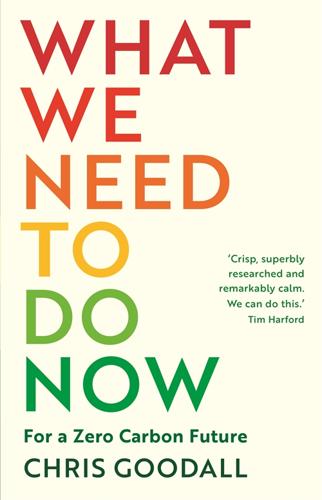
What We Need to Do Now: A Green Deal to Ensure a Habitable Earth
by
Chris Goodall
Published 30 Jan 2020
And these rules apply also to emissions, as about a third of emissions related to clothes come from looking after them. Tumble drying is particularly energy-consuming (though this should become less important, of course, as we move away from using fossil fuels for electricity generation). Another good reason for not frequently washing clothes is to avoid microfibre shedding from synthetic fabrics, which often end up in the sea. Each time a garment is washed, vast quantities of tiny fibres are released – 100,000 per wash for a new piece of polyester – and these can be ingested by tiny marine creatures. Washing polyester clothes in a Guppyfriend bag, promoted by manufacturer Patagonia, can dramatically reduce the number of fibres lost.

Survival of the Richest: Escape Fantasies of the Tech Billionaires
by
Douglas Rushkoff
Published 7 Sep 2022
Toxic clouds, plague, and radiation have a way of spreading and seeping through the most well-thought-out barricades. HEPA filters need to be regularly replaced, and sometimes fail even when they are. Air pollution from factories in China and forest fires in Europe and California already travels to distant continents, measurably contaminating Everest and Katmandu. Cancer-causing microplastics are as plentiful in the polar ice as they are in the typical European town. The average American already consumes about a credit card worth of plastic a month, according to a World Wide Fund for Nature study . Just read the news. There is no escape. Surely the billionaires who brought me out for advice on their exit strategies were aware of these limitations.
…
,’ ” Public Intelligence Blog , July 14, 2021, https:// phibetaiota .net /2021 /07 /jc -cole -american -gray -swans -june -2021 -1 -only -june -2021 -petroleum -events -and -other -curious -happenings /, accessed September 20, 2021. 17 Rising S Company : Rising S Company, “All Steel Bunkers and Bomb Shelters,” https:// risingsbunkers .com, accessed June 30, 2021. 18 luxury underground apartments : Elizabeth Stamp, “Billionaire Bunkers: How the 1% are preparing for the apocalypse,” CNN , August 7, 2019, https:// www .cnn .com /style /article /doomsday -luxury -bunkers /index .html. 18 the Oppidum : Jim Dobson, “Inside the World’s Largest Private Apocalypse Shelter, The Oppidum (New Images),” Forbes , November 5, 2015, https:// www .forbes .com /sites /jimdobson /2015 /11 /05 /billionaire -bunker -inside -the -worlds -largest -private -apocalypse -shelter -the -oppidum / ?sh =675141ef6ad6. 19 real estate agents specializing in private islands : Heather Murphy, “The Island Brokers Are Overwhelmed,” New York Times , October 9, 2020, https:// www .nytimes .com /2020 /10 /09 /realestate /private -islands -coronavirus .html. 19 Cancer-causing microplastics : Jamie Wheal, Recapture the Rapture: Rethinking God, Sex, and Death in a World That’s Lost Its Mind (New York: HarperCollins, 2021). 19 World Wide Fund for Nature study : Wijnand de Wit and Nathan Bigaud, “No Plastic in Nature: Assessing Plastic Ingestion from Nature to People,” World Wide Fund for Nature, 2019, https:// d2ouvy59p0dg6k .cloudfront .net /downloads /plastic _ingestion _web _spreads .pdf. 21 “aquapreneurs” : Joe Quirk and Patri Friedman, Seasteading: How Floating Nations Will Restore the Environment, Enrich the Poor, Cure the Sick, and Liberate Humanity from Politicians (New York: Free Press, 2017). 21 humanity’s return to the sea : “Busan UN Habitat and OCEANIX Set to Build the World’s First Sustainable Floating City Prototype as Sea Levels Rise,” UNHabitat.org, November 18, 2021, https:// unhabitat .org /busan -un -habitat -and -oceanix -set -to -build -the -worlds -first -sustainable -floating -city -prototype -as. 21 “To establish permanent” : https:// www .seasteading .org. 21 “We’ve had the agricultural revolution” : https:// www .seasteading .org.
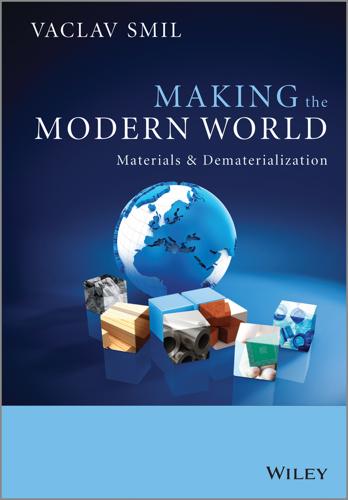
Making the Modern World: Materials and Dematerialization
by
Vaclav Smil
Published 16 Dec 2013
Dangers to ocean life are posed by every size unit of discarded plastics: among the largest items are abandoned or damaged fishing nets that can ensnare fishes, dolphins, and often even whales; while aquatic birds often mistake small-size pieces of plastic for small fish or invertebrates and regurgitate them to their fledglings: the stomachs of many species show a distressing collection of such objects. And microplastics – the smallest pieces (sizes less than 5, 2, or 1 mm) that are manufactured for cosmetics, drugs, and industrial uses and that arise from abrasion and photodegradation of larger pieces – can be ingested by marine biota and can have serious metabolic and toxic effects (Cole et al., 2011). Inevitably, masses of plastic microparticles have been also accumulating on shorelines where they endanger more organisms (Browne et al., 2011).
…
Broudy, E. (2000) The Book of Looms: A History of the Handloom from Ancient Times to the Present, University Press of New England, Lebanon, NH. Brown, K.S., Marean, C.W., Herries, A.I.R. et al. (2009) Fire as an engineering tool of early modern humans. Science, 325: 859–862. Browne, M.A., Crump, P., Niven, S.J. et al. (2011) Accumulation of microplastic on shorelines worldwide: sources and sinks. Environmental Science and Technology, 45: 9175–9179. Brunetta, L. and Craig, C.L. (2010) Spider Silk: Evolution and 400 Million Years of Spinning, Waiting, Snagging, and Mating, Yale University Press, New Haven, CT. Brydson, J.A. (1975) Plastic Materials, Newnes-Butterworths, London.
…
CMI (Can Manufacturers Institute) (2012) Aluminum Beverage Cans, http://www.cancentral.com/pdf/AluminumBeverageCanFacts.pdf (accessed 22 May 2013). CMI (2013) Steel Food Cans, http://www.cancentral.com/pdf/SteelCanFoodFacts.pdf (accessed 22 May 2013). Cobb, H.M. (2010) The History of Stainless Steel, ASM International, Materials Park, OH. Cole, M., Lindeque, P., Halsband, C. and Galloway, T. (2011) Microplastics as contaminants in the marine environment: A review. Marine Pollution Bulletin, 62: 2588–2597. Composites World (2006) Advanced Materials for Aircraft Interiors, http://www.compositesworld.com/articles/advanced-materials-for-aircraft-interiors (accessed 22 May 2013). Cooper, E. (2000) Ten Thousand Years of Pottery, British Museum, London.
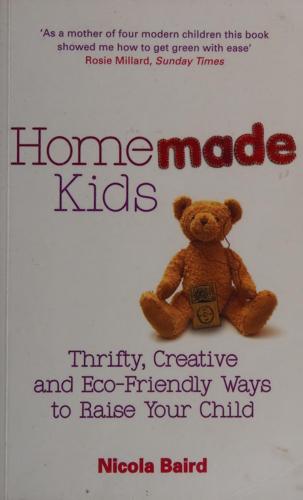
Homemade Kids: Thrifty, Creative and Eco-Friendly Ways to Raise Your Child
by
Nicola Baird
Published 14 Sep 2010
Give Your Home a’Green Makeover Ideally, replace the products in your cleaning arsenal that are damaging to water and use antibacterials sparingly. You can make natural cleaning products to clean floors, and surfaces. Instead of bleaches and harsh cleaners that sting your hands you can use better cleaning cloths with microfibres that can help loosen dirt in an almost magical way. To prevent the spread of dust, go easy on vacuuming, instead start by damp dusting surfaces and gradually remove carpets which can become reservoirs of all sorts of nasties, including allergens. Useful, non-toxic cleaning products are lemon juice (use to shift marks, add a fresh scent, remove ingrained dirt — but remember to rinse well), bicarbonate of soda and vinegar (which also removes limescale deposits in kettles).
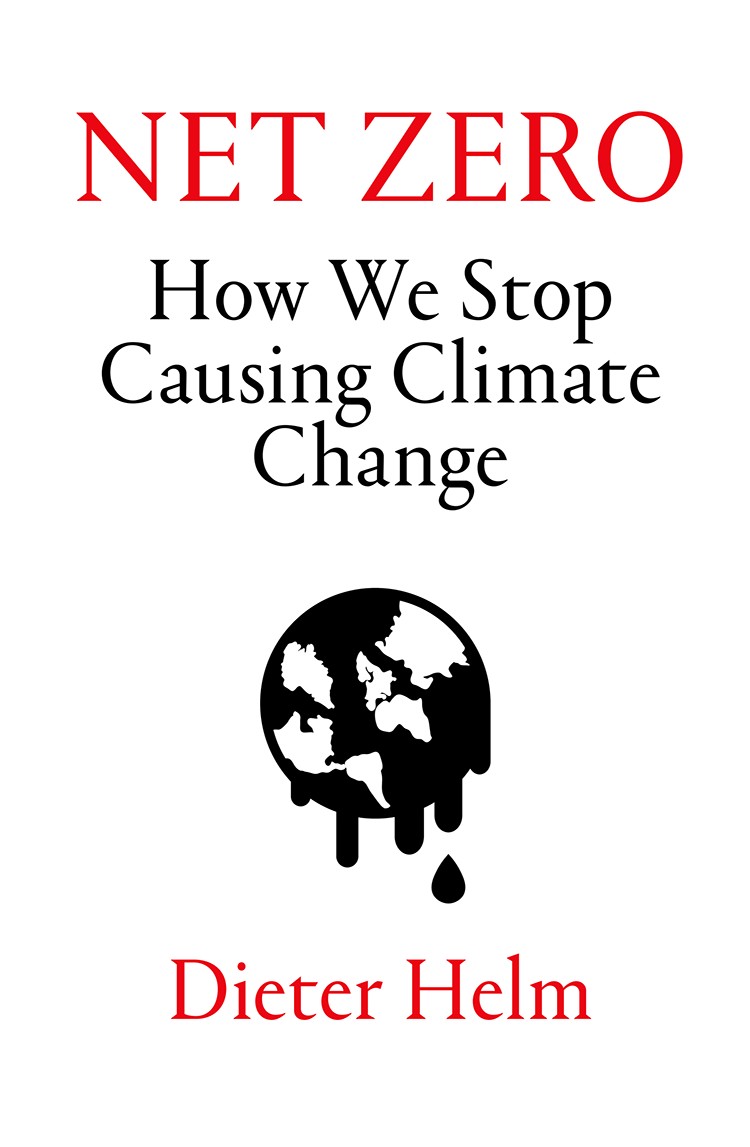
Net Zero: How We Stop Causing Climate Change
by
Dieter Helm
Published 2 Sep 2020
Almost all of this transport growth has been facilitated by oil. Oil’s other main use is in petrochemicals. This shows up in the plastics and a host of other products we have come to rely on. Plastics have been in the news because they have become ubiquitous pollutants of our oceans and shores. They litter our streets and landscapes. Microplastics are everywhere – in your house, in your food, in your water – and they pollute every river, lake, seashore, and all the oceans, and can even be found in deep ocean trenches. You might naively believe you can go ‘plastic-free’, but that would simply reflect an ignorance of just how far our lives have become plastic-dependent.
…
acid rain 25, 194 Africa xiv, xv, 2, 25, 30, 38, 44, 45, 47, 48, 51, 137, 229 agriculture 2, 6, 12, 13, 14, 23, 35–6, 43, 44–5, 70, 76, 86, 87–8, 95, 100, 102, 109, 116, 146–7, 149, 159, 163–80, 181, 183, 192, 197, 198, 206, 220 baseline, the 164–8 biodiversity loss and 2, 5, 100, 164, 165, 168, 169, 171, 172, 174, 180 biofuels and 197–8 carbon emissions and 2, 12, 13, 35–6, 76–7, 146–7, 163–80 carbon price and 167–70, 171, 172, 173, 180 China and 28–9, 35, 45, 180 economics of 76, 165, 166–7, 171, 174 electricity and 13, 166, 168, 174, 178, 180 fertiliser use see fertiliser lobby 14, 110, 164, 165, 169, 170, 197 methane emissions 23, 84, 177, 178, 179 net gain and 172–4 net value of UK 76, 166 new technologies/indoor farming 87–8, 174–9, 180, 213 peat bogs and 2, 179 pesticide use see pesticides petrochemicals and 166 polluter-pays principle and 76, 168–70, 172, 173 pollution 36, 86, 163, 165–6, 168–70, 172, 173, 177–8, 230 public goods, agricultural 170–4, 180 sequestering carbon and 12, 95, 163, 166, 168, 169, 170, 171, 172, 173–4, 177, 179, 180 soils and 2, 146, 163, 164, 165, 166, 168, 169, 171, 172, 175, 179 subsidies 14, 76, 102, 109, 116, 164, 165, 166, 167, 169, 170, 172, 180, 228 25 Year Plan and 179–80 Agriculture Bill (2018), UK 170 air conditioning 135–6, 224, 233 air quality xiii, 13, 25, 46, 52, 61, 70, 135, 153, 177, 180, 201, 216, 230, 232 air transport 3–4, 6, 11, 13, 22, 50, 53, 73, 87, 88, 92, 107, 125, 128, 129, 132, 133, 134, 149, 156–7, 186, 195, 201, 203–5 aluminium 7, 117 Amazon rainforest 2, 34, 35, 95, 145, 149–50, 151, 155, 229, 230 ammonia 35, 137, 191 anaerobic digesters 35, 165, 230 animal welfare 167, 177 antibiotics 93, 165, 174 Arctic 26, 46, 114, 178 artificial intelligence (AI) 32, 175, 220, 231 autonomous vehicles 13, 129, 132, 175, 189–90, 231 Balkans 137–8 Bank of England 121 batteries 6, 31, 131, 135, 141, 183, 184, 185–90, 191, 199, 204, 213, 214, 219, 220, 221, 225, 231 beef 5, 95, 116, 117, 167, 230 Berlin, Isaiah 104 big 5 polluter products 117–18, 120 bin Salman, Mohammad 27 biocrops 36 biodiversity xiv, 2, 5, 12, 13, 28, 35, 51, 76, 94, 100, 148, 149, 152, 153, 158, 159, 164, 165, 168, 169–70, 171, 172, 174, 180, 227, 233 bioenergy 31, 34–5, 36 biofuels 21, 35, 49, 50, 67, 70, 95, 135, 183, 184, 197–8, 210, 230 biomass 32, 34, 49, 50, 67, 69, 109, 146, 147, 151, 210, 217 bonds, government 220 BP 27, 149, 187, 199 Deepwater Horizon disaster, Gulf of Mexico (2010) 147 Brazil 2, 35, 38, 44–5, 47, 95, 145, 149–50, 155, 198 Brexit 42, 47, 56, 117, 165 British Gas 102, 139 British Steel x, 194 broadband networks 6, 11, 90, 92, 125, 126, 127–8, 130–1, 132–3, 135, 140–1, 199, 201, 202, 205, 211, 214, 231, 232 Brundtland Commission 45 BT 127–8, 141 Openreach 214 Burn Out (Helm) ix, xiv Bush, George W. 36, 48, 53, 103 business rates 76, 165 Canada 52, 191, 193 capitalist model 26, 42, 99, 227 carbon border tax/carbon border adjustment xii, 11, 13, 60, 80, 115–20, 194–6, 204 carbon capture and storage (CCS) xiv, 12, 75–6, 95, 109, 146, 147–8, 149, 154, 159, 203–4, 207, 209, 222, 223 Carbon Crunch, The (Helm) ix, xiv, 221 carbon diary 4–5, 8, 10, 11, 64–6, 83, 86, 116, 143, 144, 155, 156, 167, 180, 181, 185, 203, 205 carbon emissions: agriculture and see agriculture by country (2015) 30 during ice ages and warm periods for the past 800,000 years 21 economy and 81–159 electricity and see electricity global annual mean concentration of CO2 (ppm) 19 global average long-term concentration of CO2 (ppm) 20 measuring 43–6 since 1990 1–14, 17–37 transport and see individual method of transport 2020, position in 36–7 UN treaties and 38–57 unilateralism and 58–80 see also unilateralism carbon offsetting xiii–xiv, 4, 5, 12, 34, 45, 72, 74, 79, 94–6, 97, 105, 143–59, 192, 201, 203, 207, 214, 222, 223, 234 for companies 148–50 for countries 151–5 for individuals 155–7 markets 71–2, 110–13, 117, 144, 157–9, 208 travel and 156, 201–3 see also sequestration carbon permits 71–2, 79, 110–13, 117, 144, 208 carbon price/tax xii, xiii, xv, 8, 11, 12, 13, 26, 60, 61, 71, 72, 77, 79, 80, 84, 85–6, 102–3, 105, 106–24, 134, 143, 146, 147, 150, 151–4, 157, 159, 192, 197, 198, 199, 203, 227–30, 232, 234 agriculture and 167, 168, 169–70, 171, 173, 180 domain of the tax/carbon border adjustment xii, 11, 13, 60, 80, 115–20, 121, 124, 192, 194–6, 197, 204, 227 electric pollution and 216–18 ethics of 107–10 floor price 115, 117, 208 for imports 11, 13 prices or quantities/EU ETS versus carbon taxes 110–13 setting 113–15 transport and 192–9 what to do with the money 121–4 where to levy the tax 119–20 who fixes the price 120–1 carbon sinks 2, 5, 166, 169, 203 carboniferous age 34 cars 1, 3, 4, 7, 20, 22, 36, 44, 70, 73, 114, 129, 181, 182, 183, 184–5, 190, 191, 193, 196, 197, 198, 199 see also electric vehicles cartels 39, 40, 43, 45, 46, 47, 56 cattle farming 35, 36, 95, 150, 166, 167, 173, 177, 198 Central Electricity Generating Board (CEGB) 102, 139, 218 cement 6, 7, 26, 29, 34, 87, 117, 171 charging networks, electric vehicle 91, 129–30, 141–2, 184, 185–90, 199, 200, 202, 219 Chernobyl 78 China xi, xv, 1–2, 5, 8, 18, 42, 46, 47, 48, 64, 66, 74, 101, 180, 229 Belt and Road Initiative 28, 45 coal use 1–2, 8, 23–4, 24, 28, 31, 38, 117, 154, 206, 208 Communist Party 2, 27, 42, 46 demand for fossil fuels/carbon emissions 1–2, 8, 18, 20, 22, 23–4, 24, 25, 27–31, 36, 38, 51, 73, 117, 154, 206, 208 export market x–xi, 5, 9, 64, 66, 117, 155, 194 fertiliser use 35 GDP xv, 27, 29 nationalism and 42 petrochemical demand 22 renewables companies 9, 32, 73, 74, 77, 79 Tiananmen Square 42 unilateralism and 58, 59 UN treaties and 46, 47, 48, 53, 54, 55, 58, 59 US trade war 56, 118 Churchill, Winston 183 citizen assemblies 99–101 climate change: carbon emissions and see carbon emissions 1.5° target 38, 57 2° target 1, 10, 22–3, 28, 30, 38, 39, 45, 47, 54, 55, 57, 108, 122, 155, 206 see also individual area of climate change Climate Change Act (2008) 66, 74–7 Clinton, Bill 40, 48 Club of Rome 98 coal 1–2, 5, 8, 13, 20, 23–5, 28, 29, 30, 31, 32, 34, 36, 38, 50, 52, 53, 60–1, 67, 72, 77, 78–9, 101, 109, 112, 116, 117, 119, 134, 136, 145, 147, 148, 151, 154, 155, 182, 183, 194, 196, 206–9, 210, 212, 214, 216, 217, 218, 229, 230 coastal marshes 146, 159 colonialism 45 Committee on Climate Change (CCC), UK x–xi, 7, 74–5, 120, 164, 166, 169, 217, 235 ‘Net Zero: The UK’s Contribution to Stopping Global Warming’ report x–xi conference/video calls 6, 129, 156, 202, 205 Conference of the Parties (COP) xii, 10, 48, 50, 53–4, 55, 59, 205 congestion charges 198 Copenhagen Accord 48, 53–4, 59 Coronavirus see Covid-19 cost-benefit analysis (CBA) 71, 108, 110, 114, 138 cost of living 116 Covid-19 x, xi–xii, 1, 3, 6, 9, 18, 19, 22, 25, 27, 30, 37, 44, 46, 50, 57, 65, 69, 80, 89, 93, 129, 135, 148, 171, 201, 202, 204, 232 CRISPR 176 crop yields 172, 177 dams 2, 36, 52–3, 179 DDT (Dichlorodiphenyltrichloroethane) 100 deforestation 2, 5, 34, 35, 36, 38, 43, 44, 47, 55, 87, 95, 145, 146, 149–50, 155, 172–3, 179, 197–8, 229 Defra (Department for Environment, Food and Rural Affairs) 170 deindustrialisation x, 29, 46, 52, 54, 59, 72–4, 218 Deng Xiaoping 27 Denmark 69–70, 136–7 desalination 135–6, 179 diesel 4, 20–1, 70, 76, 86, 109, 119, 121, 129, 132, 164, 165, 166, 174, 175, 178, 179, 181, 182, 185, 186, 191, 192, 196–7, 208, 217, 230 ‘dieselgate’ scandal 196–7 digitalisation 1, 8, 11, 13, 33, 92, 117, 136, 174, 175, 180, 206, 211, 215, 221, 228–9, 231 DONG 69 Drax 147, 151, 154, 218 economy, net zero 10–12, 81–159 delivering a 96–103 intergenerational equity and 96–7 markets and 103–5 net environmental gain see net environmental gain political ideologies and 98–101 polluter-pays principle see polluter-pays principle public goods, provision of see public goods, provision of technological change and 98 EDF 139, 218 Ehrlich, Paul 98 electricity 1–2, 4, 6, 11, 12, 13, 23, 31, 32, 49, 53, 61, 65, 66, 68, 70, 73, 77, 78, 79, 91, 92, 101, 102, 109, 117, 125, 127, 128, 129–30, 131–2, 134, 135, 136, 137, 139, 140, 141, 149, 158, 166, 168, 174, 178, 180, 182, 183, 228, 229, 231, 232, 234, 235 coal, getting out of 206–7 electric pollution and the carbon price 216–18 electric vehicles 4, 6, 13, 20, 23, 49, 61, 91, 92, 94, 121, 125, 128, 129–30, 131–2, 134, 141, 183–92, 193, 194, 197, 200, 201, 202, 206, 219, 228 equivalent firm power auctions and system operators 210–16 future of 206–25 gas, how to get out of 207–9 infrastructure, electric 185–90, 218–20 low-carbon options post-coal and gas 209–10 net gain and our consumption 222–5 R&D and next-generation renewables 220–2 renewable see renewables Energy Market Reform (EMR) 219 equivalent firm power (EFP) 212–16, 217, 220 ethanol 35, 71, 95, 197 eucalyptus trees xiv, 152 European Commission 60, 71, 72, 112 European Union (EU) xiv, 2, 7, 8, 9, 37, 42, 44, 46, 47, 117, 137, 165, 166, 197; baseline of 1990 and 51–2 Common Agricultural Policy (CAP) 76, 165 competition regime and customs union 56 deindustrialisation and 46, 52, 54, 59, 72–4 directives for 2030 66 Emissions Trading System (EU ETS) 71–2, 73, 79, 110–13, 117, 144, 208 importing carbon emissions 59 Internal Energy Market (IEM) 68, 71 Kyoto and 9, 51, 59, 66–7 Mercosur Agreement 44, 95 net zero target for 2050 66, 115, 143, 155, 167, 180 Paris and 54 Renewable Energy Directive 68–71, 73, 109 2020 targets signed into law 66 2020–20–20 targets 67, 69, 74 unilateralism and 59, 66–71, 80 Eurostar 133 externalities 104, 170, 180, 196 Extinction Rebellion 6 farmers 14, 26, 35, 36, 43, 71, 76, 86, 95, 102, 109, 110, 146–7, 164, 165, 166, 169, 170, 174, 175, 196, 197, 198 fertiliser 4, 6, 7, 26, 29, 35, 61, 73, 86, 87, 116, 117, 119, 163, 165, 169, 174, 175, 178, 179, 191, 194, 197 fibre/broadband networks 6, 11, 90, 92, 125, 126, 127–8, 130–1, 132–3, 135, 140–1, 201, 202, 205, 211, 214, 231, 232 financial crisis (2007/8) 1, 19, 69 first-mover advantage 75 First Utility 199 flooding 13, 77, 149, 152, 153, 159, 170, 233 food miles 167 food security 170–1 food waste 178, 180, 231 Forestry Commission xiv Formula One 186, 196 fossil fuels, golden age of 20–5 see also individual fossil fuel France 46, 47, 52, 56, 73, 78, 101, 113, 130, 136, 138 free-rider problem 39–40, 43, 62–4, 106, 119 fuel duty 121, 195–6 fuel efficiency 197 fuel prices 26, 112–13, 209 fuel use declaration 195 Fukushima Daiichi nuclear disaster (2011) 52, 78 Fukuyama, Francis: The End of History and the Last Man 40–1 gardens 6, 43, 143, 156 gas, natural ix, 2, 5, 8, 20, 23, 24, 25, 26, 29, 31, 32, 36, 50, 52, 68, 69, 79, 102, 109, 117, 119, 129, 136, 137, 146, 147–8, 149, 183, 190, 193, 194, 207–9, 210, 211, 214, 216–17 G8 47 gene editing 172, 176, 231 general election (2019) 121 genetics 98, 172, 174–6, 231 geoengineering 177 geothermal power 137, 178 Germany 9, 30, 47, 52, 59, 60, 62, 66, 67, 69, 70, 71, 72, 73, 75, 77–80, 83, 91, 101, 112, 136, 137, 138, 144, 206, 208, 209 Energiewende (planned transition to a low-carbon, nuclear-free economy) 59, 69, 77–80, 112, 144, 208 Gilets Jaunes 101, 113 GMOs (genetically modified organisms) 176, 177 Great Northern Forest, Britain 151 Green and Prosperous Land (Helm) xiii, xiv, 165, 169, 234 greenbelt 173 greenhouse effect 17 green new deal 90, 102, 234 green parties/green votes 69, 77, 78 green QE (quantitative easing) 102–3 green walls 153, 231 greenwash 156 gross domestic product (GDP) xii, xv, 1, 25, 27, 29, 41, 57, 59, 73, 76, 83, 93, 98, 103, 133, 165, 207, 227, 229, 233 growth nodes 133 G7 47 G20 47 Haber-Bosch process 35, 163 Hamilton, Lewis 186 ‘hands-free’ fields 175 Harry, Prince 6 Heathrow 133, 134 hedgerow 76, 166, 167, 172 Helm Review (‘The Cost of Energy Review’) (2017) ix, 120, 141, 200, 210, 212, 215, 217, 220, 238 herbicide 163 home insulation 102 House of Lords 170 housing 101, 223–4 HS2 92, 125, 132–4, 138, 202 Hume, David 49 hydrogen 13, 49, 92, 125, 128, 135, 137, 183, 184, 190–2, 199, 200, 204, 206, 213, 228 hydro power 31, 35, 36, 50, 52–3, 70, 136, 137, 191 Iceland 137, 178 imports x–xi, xiii, 5, 8, 10, 11, 12, 13, 62, 68, 70, 117–18, 155, 167, 178, 173, 180, 196, 227 income effect 72, 111 income tax 121, 122, 232 India xiv, xv, 25, 30, 31, 38, 43, 44, 47, 48, 51, 54, 55, 57, 154, 229 individuals, net zero for 155–7 Indonesia 2, 35 indoor farming 87–8, 177–8, 180, 213 indoor pollutants 223, 232 Industrial Revolution 1, 18, 19, 25, 47, 116, 145 INEOS Grangemouth petrochemical plant xi information and communications technology (ICT) 117, 202, 231 infrastructures, low-carbon xiii, xiv, 11–12, 14, 28, 60, 62, 65, 66, 90, 91–4, 96, 105, 109, 123, 125–42, 143, 147, 151, 154, 159, 171, 184, 186, 187, 190, 199–200, 214, 218–20, 228, 230, 231–2, 234–5 centrality of infrastructure networks 128–30 electric 125–41, 218–20 making it happen 141–2 net zero national infrastructure plan 130–6 private markets and 125–8, 141–2 regional and global infrastructure plan 136–7 state intervention and 126, 127–8, 141–2 system operators and implementing the plans 138–41 inheritance tax 76, 165 insects 164, 177, 231 insulation 102, 224 Integrated Assessment Models 114 intellectual property (IP) 75 Intergovernmental Panel on Climate Change (IPCC) 17–18, 47, 55, 57, 108, 172 internal combustion engine 13, 22, 181–2, 183, 184, 200, 221, 228 Internal Energy Market (IEM) 68, 71, 138 International Energy Agency (IEA) 25, 207 International Monetary Fund (IMF) 51 internet banking 131, 213 internet-of-things 128, 175 Iran 27, 42, 113, 137 Iraq 56, 192 Ireland 43, 157 Italy 137, 182 Japan 27, 28, 30, 52, 73, 78, 101, 185 Jevons Paradox 224 Johnson, Boris 89–90 Kant, Immanuel 104 Keynes, John Maynard 89, 102, 103, 105 Kyoto Protocol (1997) xii, 2, 7, 9, 13, 17–18, 37, 38, 39, 40–1, 47–8, 49, 51, 52–3, 59, 66–7, 119 laissez-faire 104, 138, 188 land use 35, 61, 95, 172, 237 LED (light-emitting diode) lighting 87, 178, 179, 180, 213 liquefied natural gas (LNG) 136, 183 lithium-ion battery 185 lobbying 10, 14, 33, 69, 71, 109, 110, 111–12, 115, 121, 157, 169, 170, 187, 197, 209, 223, 227, 228 location-specific taxes 194 maize 35, 165, 197 Malaysia 2, 229 Malthus, Thomas 98 Mao, Chairman 27, 42 meat xi, 65, 164, 177, 180, 232 Mekong River 2, 28, 179, 229 Mercosur Agreement 44, 95 Merkel, Angela 78 methane 4, 23, 84, 177, 178, 179, 216 microplastics 22 miracle solution 49–50, 55, 209 mobile phone 5, 125, 185 National Farmers’ Union (NFU) 110, 164, 165, 169, 170, 171 National Grid 139, 141, 189, 200, 211, 214, 219 nationalisations 101–2, 126–7 nationalism 41, 43, 55, 56, 138 nationally determined contributions (NDCs) 54–5 natural capital xiii, 14, 33–6, 51, 85, 86, 88, 90, 94, 97, 154, 158, 168, 171, 173–4, 236 Nature Fund 123, 169, 234 net environmental gain principle xiii, xiv, 10, 12, 62, 84, 94–6, 105, 143–59, 169, 172–4, 192, 201–3, 222–5 agriculture and 169, 172–4 carbon offsetting and see carbon offsetting electricity and 222–5 principle of 94–6, 143–4 sequestration and see sequestration transport and 192, 201–3 Netherlands 138 Network Rail 214 net zero agriculture and see agriculture defined x–xv, 3–14 economy 10–12, 81–159 see also economy, net zero electricity and see electricity transport and see individual method of transport 2025 or 2030 target 89 2050 target x, xi, 5, 59, 66, 74, 75, 115, 120, 135, 143, 155, 167, 169, 180, 184, 216, 217, 222, 226, 230, 231, 232 unilateralism and see unilateralism NHS 65 non-excludable 91, 93, 126, 170 non-rivalry 91, 93, 126, 170 North Korea 42 North Sea oil/gas 9, 40, 75, 97, 102, 137, 139, 147, 148, 193 Norway 130, 137, 191 nuclear power 5, 9, 12, 18, 23, 52, 60, 73, 77–9, 109, 125, 128, 129, 136, 140, 178, 194, 199, 206, 207, 208, 209–10, 212, 214, 216, 218, 219, 222, 228 Obama, Barack 48, 53, 54, 59 oceans 2, 14, 22, 33, 85, 86, 88, 148, 163, 231 offsetting see carbon offsetting offshore wind power 31, 69, 75–6, 208, 212, 219, 221 Ofgem 220 oil ix, 2, 20, 22–3, 25, 26, 27, 31, 32, 33, 36, 39, 40, 50, 67, 69, 86, 97, 117, 119, 129, 136, 137, 146, 147, 148–9, 150–1, 152, 181–3, 184, 185, 187, 189, 190, 192–4, 196, 197, 199, 206, 209, 210, 216–17, 229 OPEC 39, 40, 193 Orbán, Viktor 41, 42 organic food 61, 87, 178 Ørsted 70 palm oil 2, 5, 6, 35, 36, 66, 71, 167, 173, 197–8, 230 pandemic see Covid-19 Paris Climate Change Agreement (2015) xii, 2, 10, 13, 18, 30, 37, 38, 39, 48, 49, 54–5, 56, 57, 58, 66, 80, 105, 106, 118, 119, 227 peat bogs xiv, 2, 13, 14, 33, 35, 36, 43, 109, 146, 169, 179 pesticides 4, 26, 61, 163, 165, 169, 174, 178, 231 petrochemicals xi, 7, 8, 20, 22–3, 29, 73, 80, 86, 117, 166, 182 petrol 4, 86, 119, 121, 129, 185, 186, 187, 191, 192, 199 photosynthesis 34, 197 plastics 1, 22, 28, 35, 43, 66, 86, 87, 119, 143, 166, 184, 231 polluter-pays principle xiii, xv, 84–90 agriculture and 76, 168–70, 172, 173 carbon price and see carbon price/tax generalised across all sources of pollution 86 identifying polluters that should pay 86 importance of 10–11, 13, 61, 62, 65 intergenerational balance and 96–7 net environmental gain and 94 sequestration and see sequestration, carbon sustainable economy and 96–7, 105, 106 transport and 192–5, 198–9 see also individual type of pollution population growth 93, 97, 177, 178, 179, 232 privatisation 127, 140, 218–19, 220 property developers 94 public goods, provision of xiii, 10, 11–12, 62, 75, 84, 90–4, 96, 104, 105, 109, 122, 123, 126, 128, 141, 147, 151, 153, 159, 164, 168, 173–4, 180, 192, 199–200, 202, 218, 229, 230 agricultural 170–4, 180 low-carbon infrastructures see infrastructures, low-carbon research and development (R&D) see research and development (R&D) Putin, Vladimir 27, 41, 42, 89 railways 11, 13, 13, 87, 91, 92, 94, 125, 128, 129, 130, 131, 132–3, 138, 139, 156, 182, 183, 187, 202, 212, 214, 232 rainforest 2, 5, 34, 35, 36, 38, 44, 47, 55, 87, 95, 145, 149, 155, 173, 179–80, 197, 229 rationalism 40–1 Reagan, Ronald 103 red diesel 76, 109, 164, 165, 196 regulated asset base (RAB) 127, 141, 215, 220 remote working 128, 156, 201–2, 205 renewables ix, 6, 8, 9–10, 18, 19, 21, 26, 31–5, 36, 49, 50, 55, 61, 67, 72, 77, 79, 85, 86, 109, 110, 112, 123, 125, 128, 131, 135, 138, 140, 144, 149, 178, 188, 191, 194, 197, 199, 207, 209–10, 211, 212, 213, 214, 215, 216, 217, 219, 220–2, 224, 228 Chinese domination of market 9, 32, 73, 74, 77, 79 cost-competitiveness of 9–10, 49, 51, 61, 68 failure of, 1990-now 19, 31–3, 36 modern global renewable energy consumption measured in TWh per year 32 miracle solution and 49–51 Renewable Energy Directive 68–71, 73, 109 subsidies ix, 9, 10, 50, 68–9, 71, 79, 80 see also individual renewable energy source Renewables UK 110 research and development (R&D) xiv, 12, 13, 14, 62, 65, 66, 90, 93–4, 104, 109, 123, 165, 172, 192, 200, 218, 220–2, 223, 228, 234 reshoring businesses 8, 204 rivers 2, 22, 28, 86, 128, 152, 165, 169, 179, 214, 230 roads 11, 28, 45, 91, 92, 125, 129, 131–2, 140, 165, 182, 189, 194, 198, 202, 232 robotics 32, 175, 204, 206, 231 Rosneft 26 Royal Navy 183 Russia 26, 27, 30, 40, 42, 44, 45, 46, 47, 48, 50, 52, 55, 56, 192, 193 RWE 139, 218 Ryanair 156–7 rye grass 35 salmon 169, 177 Saudi Arabia 26, 33, 40, 42, 50, 137, 192, 193 Saudi Aramco 26, 50 seashells 34 sequestration, carbon xi, xiv, 12, 61, 66, 85, 90, 95, 143–59, 228, 229, 231, 232 agriculture and 12, 163, 166, 168, 169, 170, 171, 172, 173, 176–7, 179, 180 baseline definition and 146–7 biofuels and 35, 146, 217 carbon capture and storage (CCS) xiv, 12, 75–6, 95, 109, 146, 147–8, 149, 154, 159, 203–4, 207, 209, 222, 223 companies, net zero for 148–51 countries, offsetting for 151–5 electricity and 222, 223 gas and 207 individuals, net zero for xi, xiv, 155–7 markets, offsetting 157–9 natural capital destruction and 2, 19, 33–6, 44, 45, 51 natural sequestration xi, xiii, 2, 7, 12, 14, 33–6, 37, 45, 52, 66, 85, 90, 94–6, 105, 143–59, 163, 168, 171, 173, 176–7, 179, 180, 203, 206, 207, 222, 223 net gain principle and 143–4, 146, 149–50 offsetting principle and 143–5 peat bogs and see peat bogs principle of xi, xiii, 2, 7, 12–13 soils and see soils transport and 185, 190, 203 tree planting and see trees, planting/sequestration and types of 145–8 wetlands/coastal marshes and 146, 159, 233 shale gas 8, 208 Shell 27, 149, 199 shipping 8, 13, 22, 28, 36, 49, 114, 125, 137, 181, 182–3, 191, 194–5, 203–5, 217 Siberia 2, 46 smart appliances 128, 129, 132 smart charging 11, 13, 128, 129, 130, 139, 214, 219 soils xiii, 2, 5, 7, 12, 14, 33, 35, 36, 43, 55, 76, 109, 146, 149, 152, 156, 159, 163, 164, 165, 166, 168, 169, 171, 172, 175, 179, 203, 228 solar panels/solar photovoltaics (PV) 5, 6, 9, 12, 13, 21, 31, 32, 33, 49, 53, 68, 69, 71, 74, 79, 87, 91, 135, 136, 137, 178, 179, 188, 204, 207, 208, 209, 210, 211, 213, 214, 216, 217, 221, 222, 223, 224–5 Sony 185 Soviet Union 18, 40, 52, 67–8, 89 soya 95 Spain 69, 130, 137 sport utility vehicles (SUVs) 106, 121, 192 spruce xiv, 152, 170 standard of living xv, 1, 5, 8, 10, 11, 14, 229, 233 staycations 201 steel x–xi, 6, 7, 8, 26, 28, 29, 53, 66, 73, 80, 87, 116, 117, 118, 119, 171, 184, 194–5 Stern, Nicholas: The Economics of Climate Change 41, 63 subsidies ix, 9, 10, 14, 32, 50, 51, 52, 53, 69, 71, 76, 79, 80, 89, 102, 109, 110, 113, 116, 123, 140, 154, 164, 165, 166, 167, 169, 170, 172, 180, 193, 196, 198, 209, 215, 221, 222, 228, 230 sugar cane 35, 71, 95, 197, 198 sulphur pollution 22, 25, 28, 78, 191, 194, 197, 230 sustainable economic growth xv, 10, 12, 14, 61, 83, 92, 94, 97, 98, 105, 227, 233 Taiwan 42 taxation xii, 11, 62, 71, 72, 76, 80, 87, 89, 90, 91, 92, 97, 101, 102, 103, 106–24, 126, 127, 130, 133, 147, 150, 151–2, 153–4, 157, 159, 165, 169, 170, 192–6, 197, 198, 199, 203, 232, 234 technological change 98, 127, 141, 174–5, 221 Thatcher, Margaret 17 Thompson, Emma 6 3D printing 175, 204 Thunberg, Greta 6, 205 tidal shocks 159 top-down treaty frameworks 13, 38–57, 80, 110, 119 tourism/holidays 6, 22, 36, 88, 94, 107, 114, 128, 156, 201, 204–5 transport, reinventing 181–205 aviation 195, 201, 203–5 see also air transport batteries and charging networks 185–90 biofuels 196–8 electric alternative 183–5 hydrogen and fuel cells 190–2 innovation, R&D and new infrastructures 199–200 internal combustion engine 181–2 net gain and offsets (reducing travel versus buying out your pollution) 201–3 oil 183–4 polluter pays/carbon tax 192–6 shipping 203–5 urban regulation and planning 198–9 vehicle standards 196–8 see also individual type of transport Treasury, UK 120–2 trees, planting/sequestration and xi, xiii, xiv, 2, 7, 13, 14, 33, 34, 45, 76, 85, 94–6, 146, 148, 149–51, 152–3, 155, 156, 157, 158, 159, 168, 169, 172, 179, 203, 231 trophy project syndrome 133 Trump, Donald 2, 8, 41, 42, 48, 89, 99, 103, 121 25 Year Environment Plan xiii, 153, 170, 179–80 UK 47, 69 agriculture and 164, 166, 167, 173 carbon emissions (2015) 30 carbon price and 115, 120 Climate Change Act (2008) 66, 74–7 coal, phasing out of 24–5, 60–1, 77, 208 Committee on Climate Change (CCC) x–xi, 7, 74–6, 120, 164, 166, 169, 217, 235 deindustrialisation and 72–4 80 per cent carbon reduction target by 2050 74 electricity and 206, 208, 218, 219, 224 Helm Review (‘The Cost of Energy Review’) (2017) ix, 120, 141, 200, 210, 212, 215, 217, 220, 238 infrastructure 125, 132–3, 134, 137, 139–40 net zero passed into law (2019) 66 sequestration and 145, 150, 153, 154, 155, 156 transport and 195–6, 197, 198 unilateralism and 58–9, 60–1, 65, 66, 69, 72–7, 80 unilateralism xi, 8, 10, 11, 25, 58–80, 83, 105, 106, 119, 125, 143, 144, 155, 164, 167, 197, 203, 227 in Europe 66–80 incentive problem and 58–60 morality and 62–6 no regrets exemplars and/showcase examples of how decarbonisation can be achieved 60–2 place for 80 way forward and 80, 83 United Nations xi, xii, 6, 10, 17, 37, 38, 118 carbon cartel, ambition to create a 39–40, 43, 45, 46–7, 56 climate treaty processes xi, 6, 10, 13, 17–18, 36, 37, 38–57, 59, 80, 110, 118, 119, 204–5 see also individual treaty name Framework Convention on Climate Change (UNFCCC) 17–18, 36, 38, 59 miracle solution and 50–1 origins and philosophy of 41 Security Council 46, 47, 57 United States 8, 74, 139, 206 agriculture in 175, 176, 197 carbon emissions 8, 29, 30 China and 27–8, 42, 118 coal and 2, 24, 28, 29, 208 economic imperialism 45 energy independence 50 gas and 8, 20, 23, 24, 29, 50, 208 oil production 40, 50, 193 pollution since 1990 29 unilateralism and 58, 59, 74 UN climate treaty process and 38, 40–1, 44, 45, 46, 47, 48, 53, 54, 56 universal service obligations (USOs) 92, 126, 131, 202 utilitarianism 41, 63–4, 108, 110 VAT 117, 119–20, 121, 122, 232 Vesta 69 Volkswagen 196–7 water companies 76, 214, 230 water pollution/quality xiv, 12, 22, 61, 76, 152, 153, 165, 169, 170, 171, 172, 175, 177, 178, 179, 180, 232 Wen Jiabao 53, 59 wetlands 159, 233 wildflower meadow 164, 184 wind power 5, 9, 12, 21, 31, 32, 33, 49, 53, 68, 69–70, 71, 74, 75, 76, 78, 79, 91, 135, 136, 137, 138, 139, 178, 188, 191, 207, 208, 209, 210, 211, 212, 213, 214–15, 216, 217, 219, 221, 222 wood pellets 67, 217, 230 Woodland Trust 156, 158 World Bank 51 World Trade Organization (WTO) 52, 56, 118 World War I 183 World War II (1939–45) 78, 90, 92, 101, 106, 171 Xi Jinping 27, 41, 42 ACKNOWLEDGEMENTS So much is now discussed, written and published about climate change that it is impossible to keep track of all the ideas and conversations that have influenced my understanding of the subject.

Liquid: The Delightful and Dangerous Substances That Flow Through Our Lives
by
Mark Miodownik
Published 5 Sep 2018
They pull water up against the force of gravity, from the ground into their bodies, using a system of tiny tubes that run through their roots, stems and leaves. As the tubes become microscopic, so the ratio of the tube’s inner surface area to the volume of liquid increases, and so the effect gets bigger. Hence manufacturers sell ‘microfibre’ cloths for window cleaning, which have microchannels similar to a plant’s. They suck up water, allowing the cloth to clean more efficiently. Kitchen tissue mops up liquid spills using the same mechanism. These are all examples of ‘wicking’, the same surface tension effect that allows oil to climb up a string – or, more precisely, a wick.

Happy Inside: How to Harness the Power of Home for Health and Happiness
by
Michelle Ogundehin
Published 29 Apr 2020
And as a suggestion, rather than trying to batter bacteria into submission with ever-stronger counter-agents promising destruction of 99 per cent of all known germs (which may well be giving rise to the antibiotic-resistant superbugs we hear about in the news), use biodegradable disposable paper towels for day-to-day surface wiping and handdrying in the kitchen. Damp dish cloths and cotton tea towels rapidly become veritable bacteria breeding grounds if not boil-washed every day, which in itself would be very wasteful. Microfibre cloths made from bamboo (being highly sustainable to grow) are good longer-term alternatives for things such as furniture polishing and glass cleaning. And a steam mop is another worthwhile investment. BLEACH It’d be easy to think that bleach is pretty anodyne, being inexpensive and readily available at any supermarket.

Worn: A People's History of Clothing
by
Sofi Thanhauser
Published 25 Jan 2022
Once the tiny plastics are in the ocean, there is no way to remove them. There, they enter “the diets of marine animals and accumulate throughout the food chain,” writes journalist Brian Resnick. The plastic pieces are “toxic to wildlife on their own, but they can also act like sponges, soaking up other toxins in the water.” A 2018 study showed microplastics in the stomachs of three quarters of fish caught at mid-ocean depths in the northwest Atlantic. Even animals in the Mariana Trench, where the Pacific Ocean sinks to its deepest reaches, have been found to be ingesting microfibers. Microfibers represent the dominant source of plastic pollution in the ocean.
…
“The average person ingests over 5,800 particles of synthetic debris” a year, a 2018 paper looking at contamination in beer, tap water, and sea salt found, and “most of those particles are plastic fibers.” Every year, half a million tons of plastic microfibers seep into the ocean, the equivalent of fifty billion plastic bottles. Microplastics are a dramatic new problem for the world’s water, even while older ones persist, now magnified by the sheer scale of garment production. Garments made from microfibers are increasingly sold by fast fashion retailers like Zara, Forever 21, and H&M—retailers that found a way around the dwindling fortune of the department store by producing both more and increasingly faster changes to their offerings.
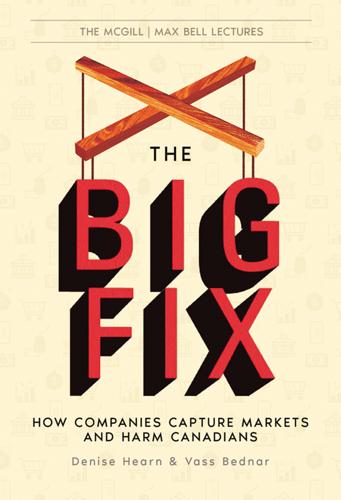
The Big Fix: How Companies Capture Markets and Harm Canadians
by
Denise Hearn
and
Vass Bednar
Published 14 Oct 2024
Dean Butler, the founder of LensCrafters, which was acquired by EssilorLuxottica in 1995, called this “a complete rip-off.”26 Once you see this kind of consolidation, you can’t unsee it. Consolidation is well known in often-discussed sectors such as airlines, banking, grocery, and telecommunications in Canada. However, many other markets have transformed into oligopolies in recent decades. Like microplastics that infect our bodies without us even seeing it, Canada’s anti-competitive markets are just a background feature that infects every aspect of our lives, including the food we consume and the entire value chain of how food gets from a farm to our table. Agriculture is one of the most highly concentrated areas of the economy, both in Canada and globally, with only a handful of transnational corporations dominating the global food value chain.

Growth: From Microorganisms to Megacities
by
Vaclav Smil
Published 23 Sep 2019
No major biome (be it tropical or temperate grasslands and forest, tundras or wetlands) has escaped extensive destruction or at least modification, with some of these transformations going back thousands of years, others remaining relative subdued but growing at unprecedented rates since the 1950s. Oceans have been affected by changes ranging from gradual storage of heat generated by the tropospheric warming (Wang et al. 2018) to massive accumulation of microplastics (GESAMP 2015) and by declining oxygen content in both open and coastal waters (Breitburg et al. 2018). The capacity of fresh water resources to deliver reliable supplies, particularly in densely populated Asia where cropping relies heavily on irrigation and where Himalayan glaciers are a key source of runoff, has been reduced, in some regions to a worrisome degree.
…
That is as true of the depletion of deep aquifers (whose water is withdrawn for mostly highly inefficient crop irrigation) and deforestation in wet tropics (the harbors of the biosphere’s greatest species diversity) as it is of the globally excessive soil erosion that is, slowly but steadily, diminishing the productive capacity of crop fields; as true of the continuing losses of biodiversity (be it due to deforestation, spreading urbanization, or demand for traditional medicines) as it is of a multifaceted assault on the oceans that ranges from overfishing at the top of the marine food chain to the now ubiquitous presence of microplastics in seawater (GESAMP 2015). Concerns about rapid global warming—now generally seen as an average tropospheric temperature increase of more than 2°C above the pre-1850 mean—are only the latest, and the most prominent, expression of that irreconcilable conflict between the quest for continuous economic growth and the biosphere’s limited capacity to deal with its environmental burdens (IPCC 2014).
…
Gerland, P., et al. 2014. World population stabilization unlikely this century. Science 346:234–237. Gerrard, D. E., and A. L. Grant. 2007. Principles of Animal Growth and Development. Dubuque, IA: Kendall Hunt. GESAMP (Joint Group of Experts on Scientific Aspects of Marine Environmental Protection). 2015. Microplastics in the Ocean. http://web.tuat.ac.jp/~gaia/item/GESAMP.pdf. Gewin, V. 2003. Genetically modified corn—environmental benefits and risks. PLoS Biology 1:15–19. Gewirtz, D. A., et al. 2007. Apoptosis, Senescence and Cancer. Totowa, NJ: Humana Press. Gibbon, E. 1776–1789. The History of the Decline and Fall of the Roman Empire.

Simply Living Well: A Guide to Creating a Natural, Low-Waste Home
by
Julia Watkins
Published 6 Apr 2020
I’ve collected these slowly over the course of several years, sometimes from online shops but, as often as possible, from my local hardware store. Below is a list of tools I either own or covet. You don’t need all or even half of them—chosen carefully, a few will go a long way. You may notice that, despite their popularity, microfiber cloths are not on the list—although they do make cleaning easier, unfortunately they introduce microplastics into our water system and pollute streams, rivers, and oceans. • Cotton string mop with wooden handle (adult and child-size, if needed) • Wooden Cuban mop and cotton mop cloths, as an alternative to a cotton string mop • Corn broom with wooden handle (adult and child-size, if needed) • Split horsehair broom with wooden handle, as an alternative to a corn broom • Short wooden-handled broom with natural bristles, for cleaning small areas • Long-handled lamb’s wool duster or short-handled goat hair brush, for dusting • Metal dustpan, for sweeping • Galvanized steel or enamel buckets, for mopping and washing surfaces • Small wooden-handled brushes with natural bristles for scrubbing dishes, cleaning fruits and veggies, scouring pots, cleaning bottles, and scrubbing floors • Wooden-handled toilet brush, stored in a large enamel or metal pitcher • Copper and/or hemp scrubbers for washing dishes and scrubbing surfaces • Cotton bar mop towels, flour sack towels, rags cut from old towels and T-shirts, for all manner of cleaning • Compostable Swedish dish cloths and loofah sponges, for washing dishes • Glass Parmesan cheese shaker, to store baking soda and make it easy to sprinkle on surfaces • Glass squirt bottles, for cleaning sprays and air fresheners • Old bamboo toothbrushes, for cleaning cracks and hard-to-reach places • Newspapers, for drying windows and glass without leaving streaks Natural Cleaning Tools Citrus All-Purpose Cleaner If I were forced to turn in all but one of my homemade cleaning products, this would be the one I’d beg to keep.

The Interior Design Handbook
by
Frida Ramstedt
Published 27 Oct 2020
Natural or ecological colors Paint Fewer chemicals, more attractive sheen, more environmentally friendly Vegetable-tanned leather Chrome-tanned leather Fewer toxic chemicals Washable loose covers Nonremovable covers Easier to clean and maintain, longer lasting Ecological textiles (e.g., linen, cotton, wool) Synthetic materials and plastics More sustainable, fewer chemicals involved in the production, no microplastics that can pass into the environment Tencel or recycled polyester Virgin/nonrecycled synthetics Lower carbon dioxide emissions CPU (Cost per Use) Buying cheap furniture and accessories may seem economical at the time but can prove very expensive in the long run.
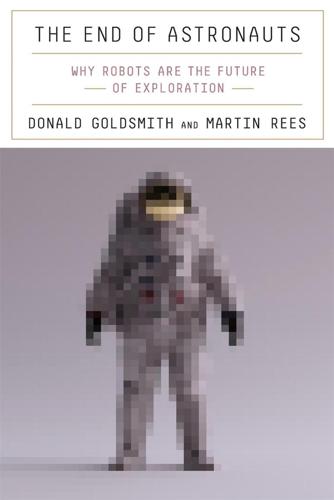
The End of Astronauts: Why Robots Are the Future of Exploration
by
Donald Goldsmith
and
Martin Rees
Published 18 Apr 2022
Most of this litter will orbit the Earth for years on end.15 The growing satellite swarm threatens to generate a “Kessler effect,” named after a NASA expert in space detritus, David Kessler, who predicted a self-reinforcing cascade when the remnants of collisions themselves collide to generate still more debris.16 The Kessler effect would mimic the current situation of seaborne waste, whose interactions follow a fractal process that produces ever-smaller particles of metal and plastic. Although three-quarters of the mass of oceanic detritus consists of pieces more than two inches across (and thus potentially recoverable, albeit with a mammoth effort), the remaining 25 percent consists of microplastics less than 1 / 25 of an inch in size, which are almost impossible to remove from the ocean.17 These tiny particles account for almost 95 percent of the estimated trillions of pieces of trash floating within the Great Pacific Garbage Patch, located in the North Pacific between North America and Japan.
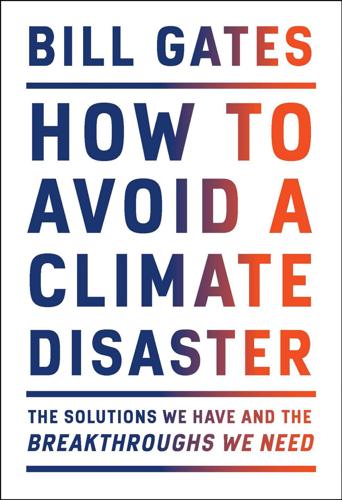
How to Avoid a Climate Disaster: The Solutions We Have and the Breakthroughs We Need
by
Bill Gates
Published 16 Feb 2021
Although humans were using natural plastics, such as rubber, thousands of years ago, synthetic plastics only came into their own in the 1950s, thanks to some breakthroughs in chemical engineering. Today there are more than two dozen types of plastics, and they range from the kind of thing you might expect—the polypropylene in yogurt containers, for example—to more surprising uses like the acrylic in paint, floor polish, and laundry detergent, or the microplastics in soap and shampoo, or the nylon in your waterproof jacket, or the polyester in all those regrettable clothes I wore in the 1970s. All these different types of plastics have one thing in common: They contain carbon. Carbon, it turns out, is useful in creating all sorts of different materials because it bonds easily with a wide variety of different elements; in the case of plastics, it’s usually clustered with hydrogen and oxygen.
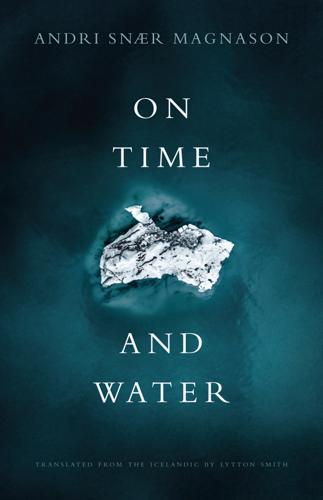
On Time and Water
by
Andri Snaer Magnason
Published 15 Sep 2021
In a strange way, everything that washed ashore became a kind of nature, more often than not crumpled and weathered and covered with barnacles and seaweed. The plastic at the shore is visible and messy and can cause considerable damage to the biota, with birds and fish tangled in nets; when plastic breaks down into microplastics, it can enter the food chain. But trash is first and foremost a symbol of our disrespect for Earth, how disconnected we are from the cycles of life. Refuse and dead animals have always nourished other species, but we are the first species to produce waste that is toxic, useless, and that, in fact, harms nature.
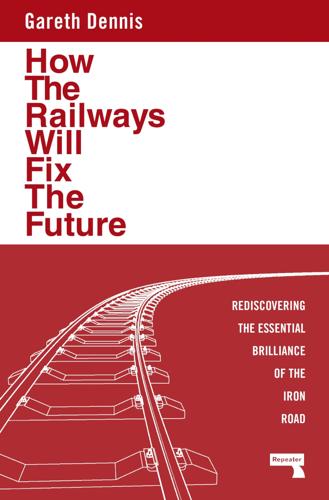
How the Railways Will Fix the Future: Rediscovering the Essential Brilliance of the Iron Road
by
Gareth Dennis
Published 12 Nov 2024
Roads rely on untrained people in control of powerful and heavy vehicles in an open environment. Cars offer little or no control of the main variable that causes problems in any transport system: human error. Further, air quality in many cities continues to worsen, even with the proliferation of electric vehicles. The largest source of microplastics in the atmosphere and ocean is car tyres, and this is only going to increase as cars get heavier to accommodate batteries and larger to meet the profit demands of the automotive industry. Car dominance and dependence have even more egregious secondary effects. The urban realm has been twisted, homogenised, fragmented and flattened to satisfy the needs of these metal boxes.

Do You Dream of Terra-Two?
by
Temi Oh
Published 15 Mar 2019
Poppy had packed frilly throws and crepe-paper lanterns, a black and white print of Audrey Hepburn. Everything they’d packed had been sent up to the shuttle months ago and was covered now in a thin layer of dust. Other items had been launched years ago; a two-decade supply of toothpaste sponsored by Colgate, microfibre duvets from John Lewis. Heinz had donated 100,000 cartons of dehydrated soup and baked beans. ‘Do you think the bed could fit two?’ Poppy flopped back onto it. ‘Planning on inviting anyone?’ Juno asked. Poppy smiled mysteriously and tapped her nose. Juno shuddered at the thought and changed the subject.

Scary Smart: The Future of Artificial Intelligence and How You Can Save Our World
by
Mo Gawdat
Published 29 Sep 2021
Saving our planet from global warming is entirely up to you. If we need to reduce the carbon footprint by a billion road trips a day, for example, in order for the trees to keep up and clean the air, it will still be that one trip that you skip that will tilt the scale. If saving the hundreds of dying species that are suffocating in microplastics means that we, humanity, must reduce our single-use plastic consumption by a trillion bottles a year, it will still be that one bottle that you recycle that will tilt the scale. Helping our hypermasculine world to find its balance and be a bit more feminine – nourishing, caring, life-giving and connected – may take millions of us to change, but we would never make it without you.
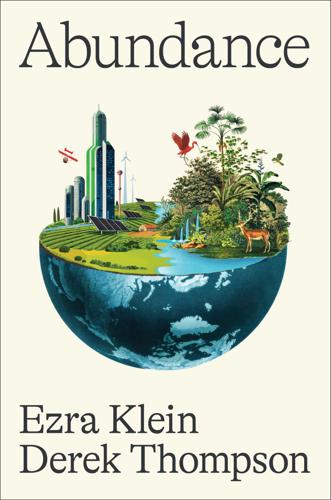
Abundance
by
Ezra Klein
and
Derek Thompson
Published 18 Mar 2025
It is much more than an answer because it is not really about climate at all. It is an anti-materialist philosophy that holds that humanity made its fundamental errors hundreds of years ago, trading the animism of our ancestors for Christianity’s promise of dominion over nature. The problem is not simply greenhouse gas emissions or microplastics. It is Cartesian dualism and American-style capitalism and everything these systems of thought and practice have taught us to value and prize and want. “Those who sought to pave the way for capitalism in the sixteenth century first had to destroy other, more holistic ways of seeing the world, and either convince or force people to become dualists,” writes Jason Hickel in Less Is More: How Degrowth Will Save the World.

Superbloom: How Technologies of Connection Tear Us Apart
by
Nicholas Carr
Published 28 Jan 2025
If judged from a semantic perspective, the perspective of, say, a human editor, the resulting stream of content appeared random. It was just one thing after another: a video of a laughing baby, a news headline about a school shooting, a photo of a friend on vacation, an ad for a toenail fungus remedy, a contouring tip from a Kardashian, a story about microplastics in the ocean. Everything in the feed was given the same semantic weight, which was no weight. Everything had the same semantic context, which was no context. Zuckerberg explained the News Feed’s rationale to his staff in a memorable sentence: “A squirrel dying in front of your house may be more relevant to your interests right now than people dying in Africa.”11 The statement is grotesque not because it’s false—it’s altogether true—but because it invokes a category error.
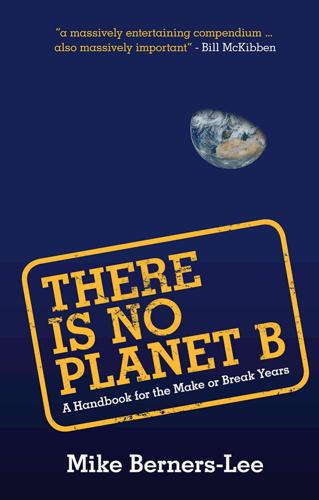
There Is No Planet B: A Handbook for the Make or Break Years
by
Mike Berners-Lee
Published 27 Feb 2019
Science 347(6223), pp. 768–71. They made their estimates of plastic waste entering the ocean by linking worldwide data on solid waste generation, population density and quality of waste management. Available at: https://tinyurl.com/y7mwfmx5 According to Lusher, A. L., McHugh, M. and Thompson, R. C. (2013) Occurrence of microplastics in the gastrointestinal tract of pelagic and demersal fish from the English Channel. Marine Pollution Bulletin 67(1), pp. 94–9. Available at https://tinyurl.com/plasticinfish Note that whilst breaking down into small pieces, which is sometimes described as biodegrading, might take only a few NOTES TO PAGES 57–60 254 15 16 17 18 hundred years, this is not the same as mineralisation; the actual breaking down of the molecules themselves, which usually does not happen at all in the ocean.
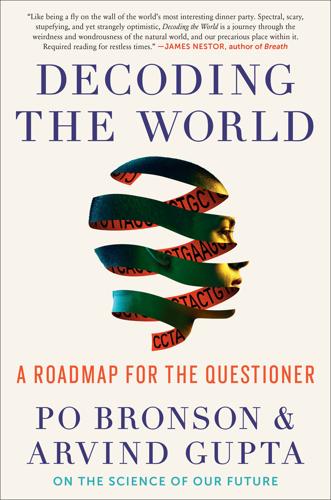
Decoding the World: A Roadmap for the Questioner
by
Po Bronson
Published 14 Jul 2020
And while the power players and policy makers are trying to figure out how to save the planet from climate change, the thrift class has its own solution that’s already fully up and running. It’s called buying less and sharing more. Rather than pollute the skies with CO2, just don’t buy a car at all—and stop going everywhere this way and that. Rather than flush microplastics into the ocean with every wash cycle, don’t buy new apparel at all. Rather than jam more plastic bottles into landfills, just drink tap water. Buy beer in refillable growlers. Don’t buy clothes at department stores—just take the clothes into the dressing room, post a photo of yourself on Instagram wearing them, and leave as the likes start accumulating by the hundreds.
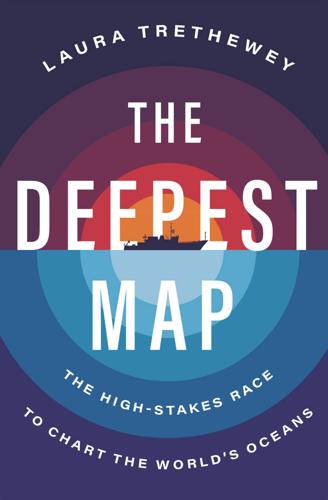
The Deepest Map
by
Laura Trethewey
Published 15 May 2023
It began, of course, at the surface of the sparkling blue sunlit waters. Within seconds of the ROV’s sinking, all light from above disappeared and the light from its headlamps grew brighter and almost eerie in the darkness, illuminating millions of particles swirling past. Those particles could mean life or death in the sea. They could be plankton; they could be microplastic; they could be marine snow—such a poetic term for floating feces or dead microscopic animals. Watching the particles scroll past the black ocean background began to remind me of something. Victor Vescovo had described seeing a similar view while descending into the deep ocean, but now I was watching it myself in real time.
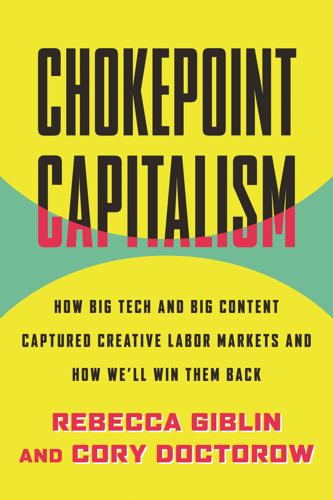
Chokepoint Capitalism
by
Rebecca Giblin
and
Cory Doctorow
Published 26 Sep 2022
Chickenizers process food beyond recognition and make it as addictive as possible to weasel themselves between the people who eat it and the farmers who grow it, all to increase their share. Worried about ecology? Corporate concentration worsens all of it—the owls, the ozone layer, the climate, microplastics, soil erosion, animal cruelty, the lot. And meanwhile, this tiny minority’s ever growing wealth and power are put to work against us in doing what so obviously needs to be done to save the planet. Creative workers have an audience, a platform—a source of power. But we’re just a part of a much larger struggle, one our comrades have already been fighting for a long time.
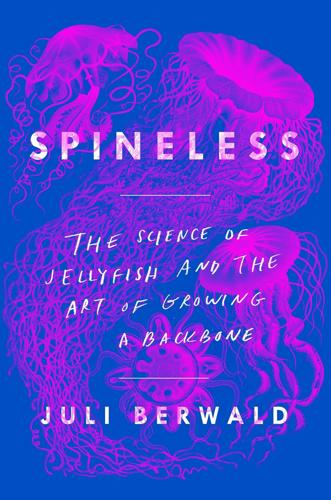
Spineless: The Science of Jellyfish and the Art of Growing a Backbone
by
Juli Berwald
Published 14 May 2017
worldwide catch of jellyfish: Lucas Brotz, “Jellyfish Fisheries: A Global Assessment,” chap. 10 in Global Atlas of Marine Fisheries: A Critical Appraisal of Catches and Ecosystem Impacts, ed. Daniel Pauly and Dirk Zeller (Washington, DC: Island Press: 2016), pp. 110–124. small pieces of floating plastic: Delphine Thibault et al., “The Neustonic Environment in the Gulf of Lion: Contribution of Gelatinous Zooplankton and Microplastics,” paper presented at the Fifth International Jellyfish Bloom Symposium, Barcelona, May 30–June 3, 2016. seedlike podocysts: Masato Kawahara et al., “Bloom or Non-bloom in the Giant Jellyfish Nemopilema nomurai (Scyphozoa: Rhizostomeae): Roles of Dormant Podocysts,” Journal of Plankton Research 35 (2012): 213–217.
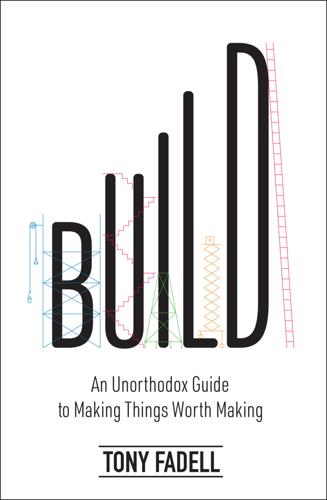
Build: An Unorthodox Guide to Making Things Worth Making
by
Tony Fadell
Published 2 May 2022
Real help when they really need it, sometimes before they know they need it. Although the people I mentor have taught me much more than I could possibly teach them. I’ve learned about so many different industries and businesses, about agriculture and aquaculture and material science, about mushroom leather and bikes and microplastics. With every team or founder I mentor, another world opens up. This job is just as meaningful as anything I’ve ever made, any object I’ve manufactured. These are incredible people and incredible people are the heart of any and all innovation. They’re going to change the world. Fix the world. Helping them, investing in them, mentoring them is probably some of the most important work I’ve ever done.
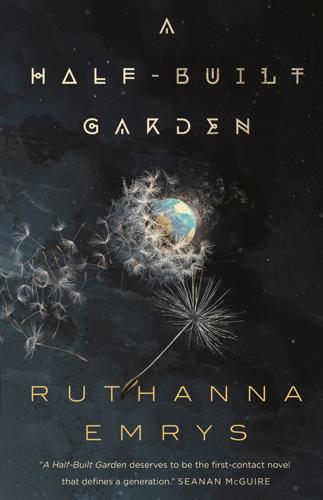
A Half-Built Garden
by
Ruthanna Emrys
Published 25 Jul 2022
I hoped Rhamnetin would be able to find them a separate closet or something, and make everyone happy. I returned to the corner Dinar had staked out. She and Athëo had done their best with the cushions. Carol, keeping close to Dori, texted: Anything we should worry about her putting in her mouth? I shook my head. Microplastics are an issue long-term, but it’ll be okay for today. Why am I exhausted? Probably because you got kidnapped to a different fucking star system and then had to be polite to a billion people who think “kidnapping” is pronounced “rescuing”? Either that or PMS. Not just me, huh? She gave up on staying at Dori’s heels and plopped down beside me.
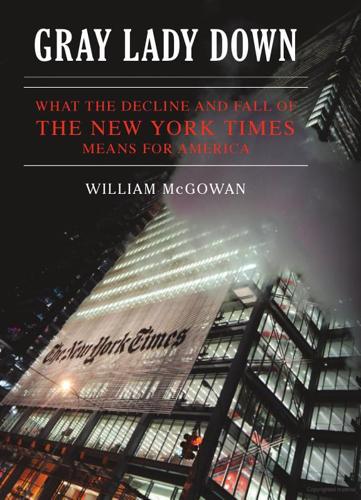
Gray Lady Down: What the Decline and Fall of the New York Times Means for America
by
William McGowan
Published 16 Nov 2010
Besides diluting the paper’s overall gravitas, the push for softer, hipper journalism required an influx of journalists with far less hard-news experience; it called for grad-school-educated “specialists” in popular culture, consumerism and trendy esoterica. Fluff-ball features on junk culture and other trivia like “the return of tight jeans” and “micro plastic surgery,” amid a crush of television-obsessed reports and analysis, caused serious readers of the Times to roll their eyes and cancel their subscriptions. The paper, according to the New York Observer’s Michael Thomas, kept “plumbing the depths of trivialization.” The fact that the soft news was restricted to the back sections of the paper at first provided a defense.